

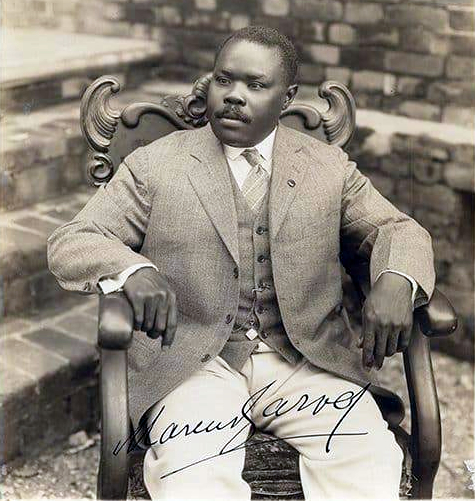
TAG TEAM Marketing is inspired by the powerful vision and tremendous accomplishments of Marcus Garvey (1887 ‑ 1940).
Below is a brief history of Marcus Garvey and his phenomenal achievements:
(Click on any photo on this page to expand it to full screen size)
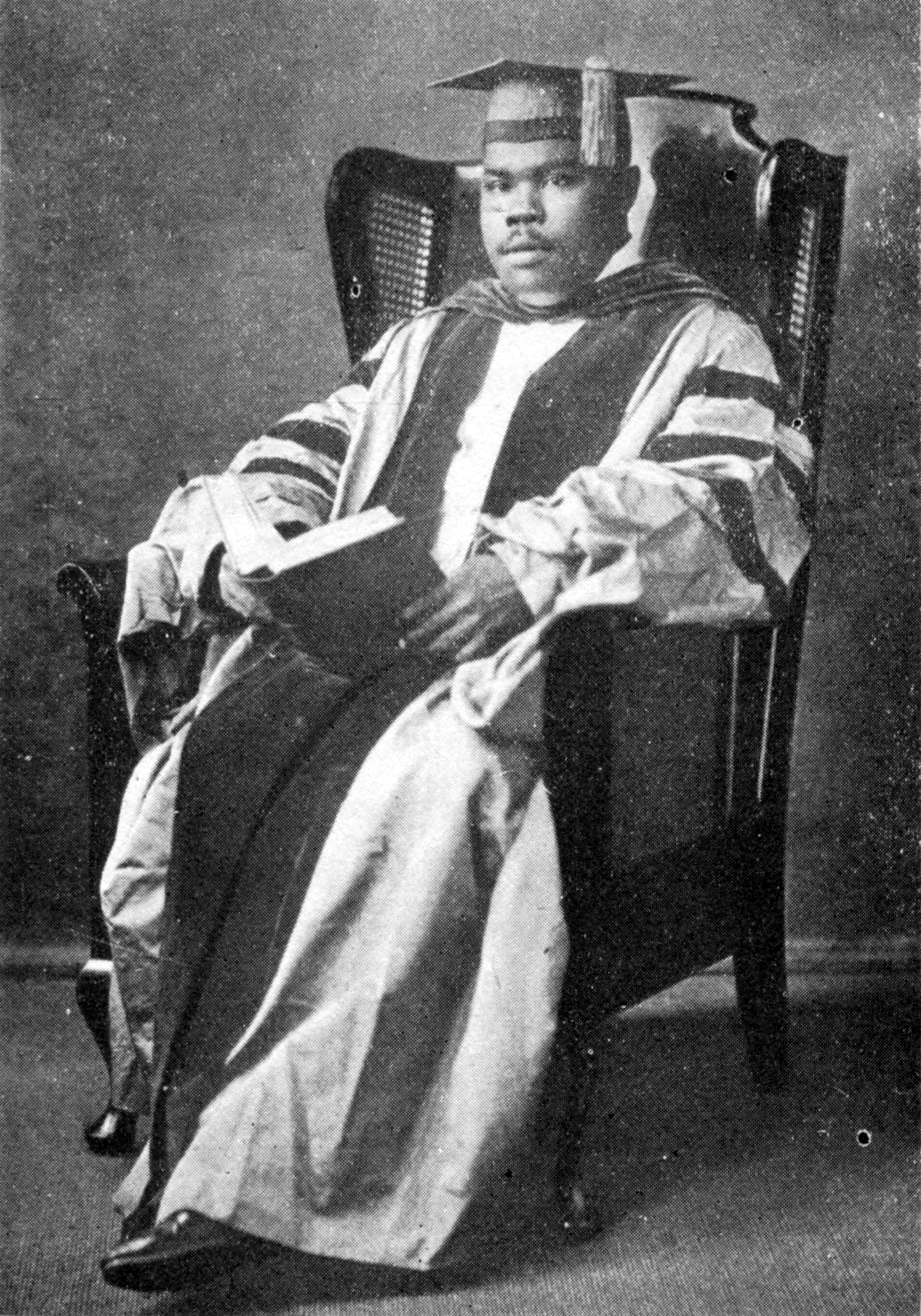
Marcus Mosiah Garvey, Jr. was born in Saint Ann's Bay, Jamaica on August 17, 1887. His mother (Sarah Garvey) was a domestic worker and farmer. His father (Marcus Mosiah Garvey, Sr.) was a mason.
Marcus was a very intelligent child who loved reading, playing, swimming, fishing and laying in the sun on the beach. He was a bright student and was good in history, math and oratory (speaking).
When he was 14 years old, he moved to Kingston, Jamaica and became a printer's apprentice.
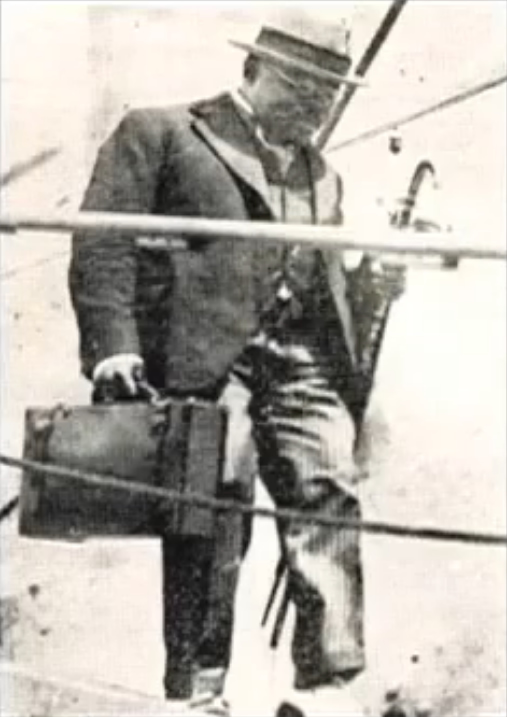
In 1910, Marcus Garvey began traveling around the world. Garvey traveled to several Caribbean countries and several Central American countries including Nicaragua, Guatemala, Columbia, Venezuela, Bolivia, Honduras and Costa Rica. He moved to Colon, Panama in 1911.
Then, he ventured overseas to Europe. He also studied law and philosophy at Birkbeck College in London, England, between 1912 and 1914. He also visited France, Spain, Italy, Austria, Hungary and Germany. By 1914, he had traveled through half of Europe.

Through all of his travels, Garvey noticed that other races had countries, governments, armies and men of big affairs (people considered to be important because of their high rank or office). Yet he noticed that Black people had nothing, regardless of where he went in the world. Garvey then famously asked himself:
Where is the Black man's government?
Where is his king and his kingdom?
Where is his president, his country, and his ambassador, his army, his navy, his men of big affairs?
I could not find them, and then I declared, "I will help to make them."
These words would define the amazing work that Marcus Garvey would do in the years to come.

So, in 1914, Marcus Garvey returned to Jamaica where he met Amy Ashwood who would later become his first wife. Then, on July 20, 1914, he and Amy founded the Universal Negro Improvement Association and African Communities League (U.N.I.A. - A.C.L.). The name is commonly abbreviated as simply "U.N.I.A.".
The purpose of the organization is "to unite all people of African ancestry of the world into one great body to establish a country and absolute government of their own".
The U.N.I.A.'s motto is "One God, One Aim, One Destiny". The motto emphasizes Garvey's singular vision for the upliftment of the race and the philosophy that no matter where Black people might live, they are still African.
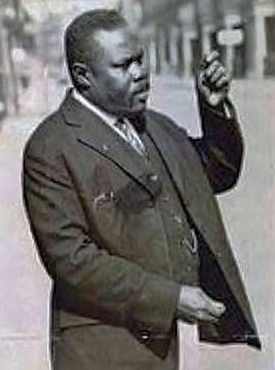
In March 1916, Garvey moved to Harlem, New York in the United States. He started speaking on street corners at night and lecturing at various halls and churches, spreading his powerful message of unity, social freedom, political freedom and economic freedom for Black people.
Marcus Garvey had an amazing ability to communicate his ideas in a way that Black people could "feel" and relate to. As a result of his speeches, he started building a following for his movement.

In May of 1916, Garvey began a historic, year-long, 38-state speaking tour and took the United States by storm. He delivered speeches in:
While in Alabama, he visited Tuskegee Institute where he was greeted by the great- Black inventor, George Washington Carver. While in Chicago, he first met with great anti-lynching campaigner, Ida B. Wells.
Many of the cities he visited would later become major chapters of the U.N.I.A.

After his speaking tour he returned to New York City in May of 1917:
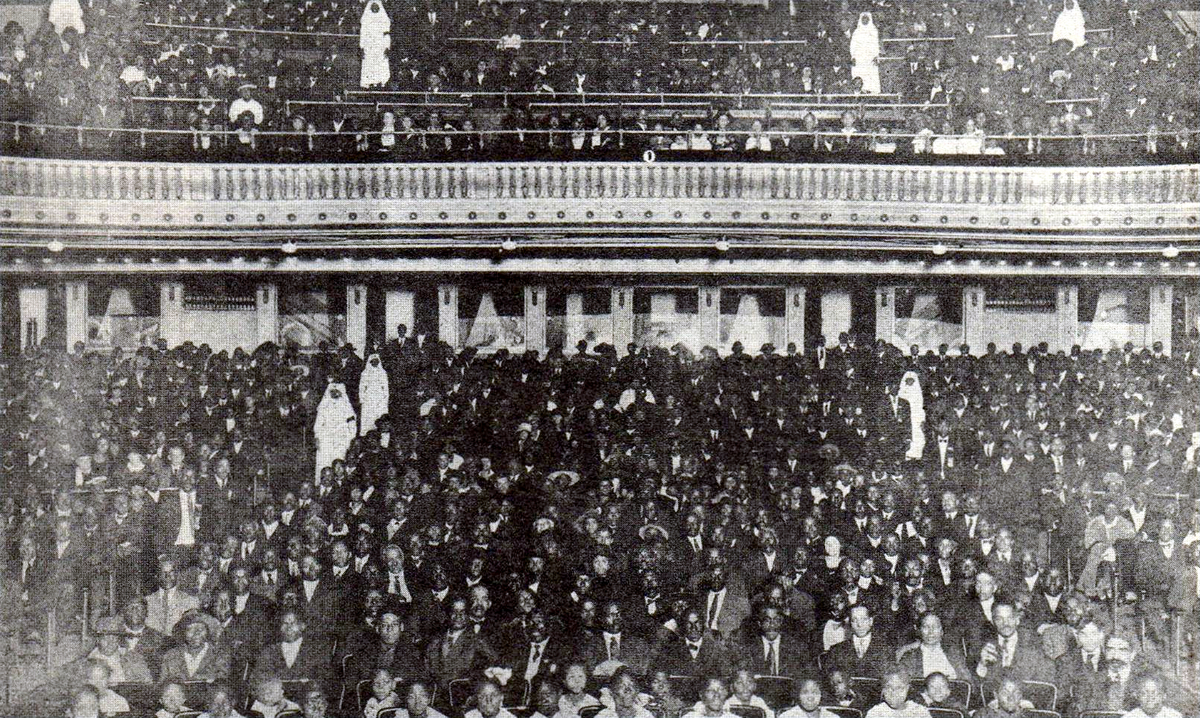
Most of the chapters were located in the United States, which had become the U.N.I.A.'s base of operations. There were, however, offices in several Caribbean countries, with Cuba having the most. More than 49 chapters existed throughout the country of Panama alone. Chapters existed in such diverse countries as Costa Rica, Ecuador, Venezuela, India and Australia. Many chapters also existed on the continent of Africa, including chapters in Ghana, Sierra Leone, Liberia, Nigeria, Namibia and Azania/South Africa.
Garvey's organization had a full governmental structure. The U.N.I.A. had officers with official titles, duties and salaries, all over the world who led the organization. The U.N.I.A. also had many different departments that addressed the needs of the Black race. As Marcus Garvey had dreamed of years earlier, Black people now had a government of their own.
With over 10 million dues-paying members in over 1,100 chapters, Marcus Garvey's U.N.I.A. had become, and still remains, the largest Black organization in history.
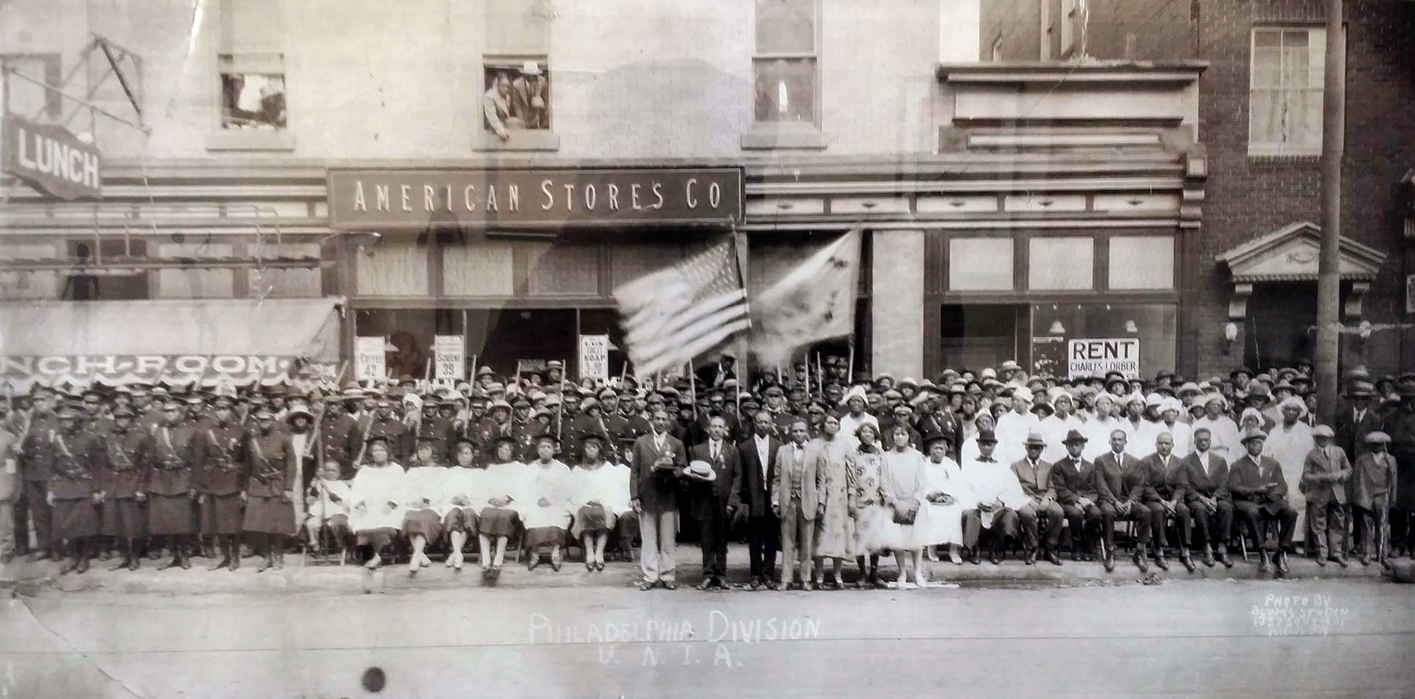

Marcus Garvey established The Negro World newspaper as a weekly newspaper to express the ideas of his organization. The first issue was published on August 17, 1918. The weekly newspaper featured news, articles, advertisements for Black products, poetry, photos and even a page specifically for women readers. The weekly newspaper documented international events related to people of African ancestry and was distributed throughout the African diaspora.
The earliest issues of the paper were created entirely by Garvey himself. As it grew, he employed others to run the day to day operations while he remained the managing editor. The Negro World was the primary way that Marcus Garvey spread his message of a self-reliant, independent Black race to Black people all over the world.
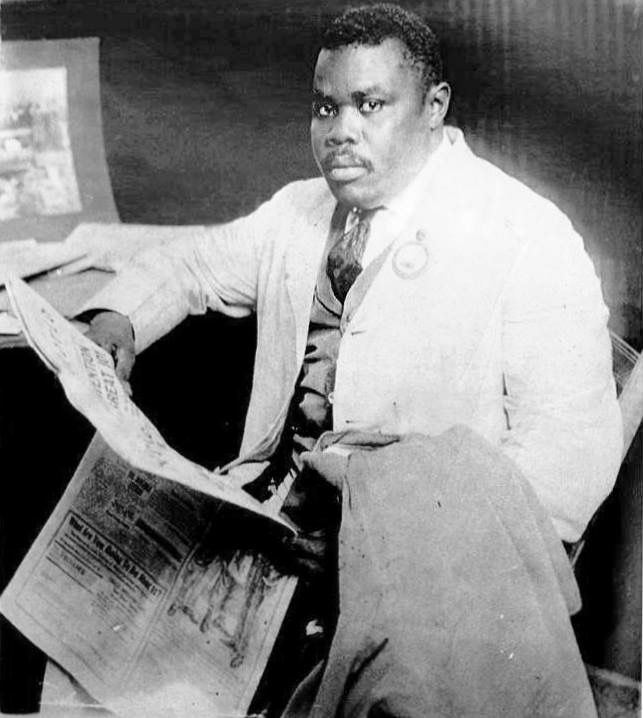
Marcus Garvey wrote a front-page editorial each week in which he developed the organization's position on different issues related to people of African ancestry around the world in general and the U.N.I.A. in particular. The editorial was printed in several languages for readers all over the world. The Negro World eventually reached a circulation of five hundred thousand copies per week.
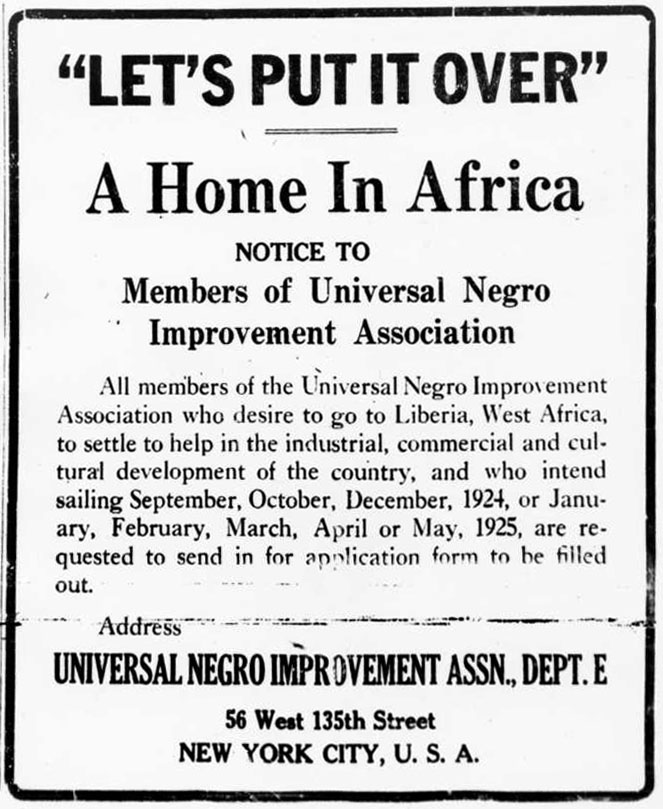
At the time, almost all African countries were colonized by European countries. Garvey believed that the continent of Africa should be free. Since other countries fought for their independence and won with their rally-cries; "England for the English!", "France for the French!" and "Germany for the Germans!", he felt that Africans everywhere should demand "Africa for the Africans!".
Garvey wanted to build a new country in Africa where Black people could be free to govern themselves. He wanted skilled Black people to go back to Africa and help build the new country.
Black people all over the world were excited about going back to their homeland, Africa.
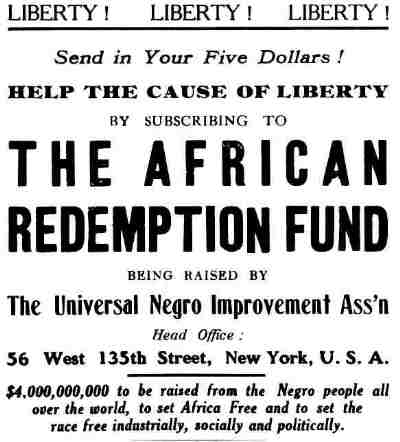
Garvey found that some of the only land on the continent of Africa that wasn't colonized by a European country was in Liberia, West Africa. Liberia had been established a century earlier by Africans who returned after being enslaved in America.
In 1920, Garvey made a historic agreement with the country of Liberia, securing millions of acres of land for the U.N.I.A. members to settle on and colonize.
In exchange, Garvey agreed to raise millions of dollars to pay off Liberia's debts, establish a trade route to serve the nation, and improve Liberia's health services. So, Garvey started the African Redemption Fund to raise the money.
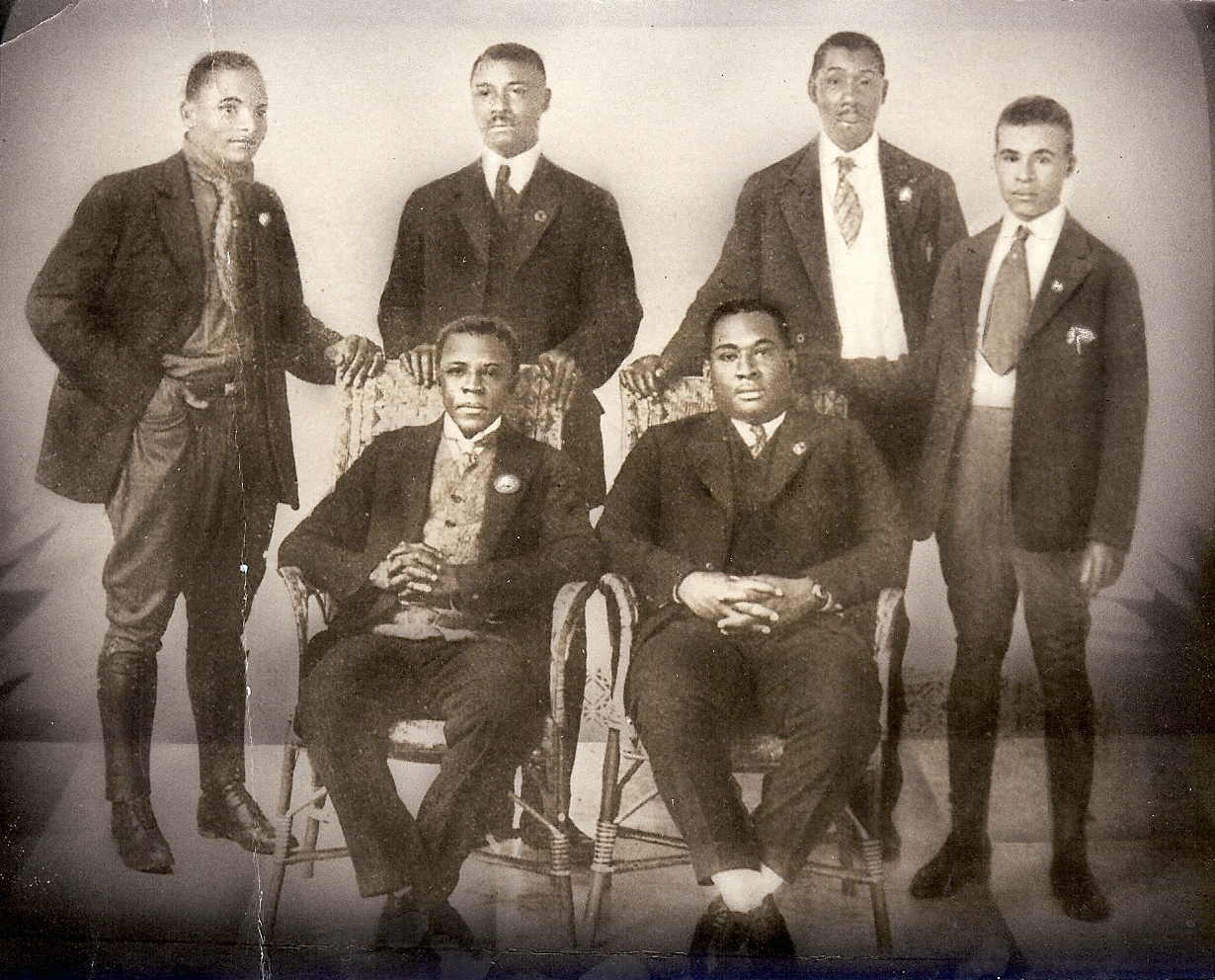
Garvey made plans to build the first city in the U.N.I.A's new land. He wanted it to be as grand as New York City. So, in 1921, he sent a delegation of experts (shown in photo) to Liberia, West Africa to survey the land for construction.
By 1924, the U.N.I.A. was all set to build the first colony of the new land on the Cavalla River in Liberia. The U.N.I.A. sent two shiploads of building materials worth $50,000, as well as a team of U.N.I.A. engineers, from New York, U.S.A. to Liberia, West Africa to begin construction and prepare for the first wave of U.N.I.A. settlers.
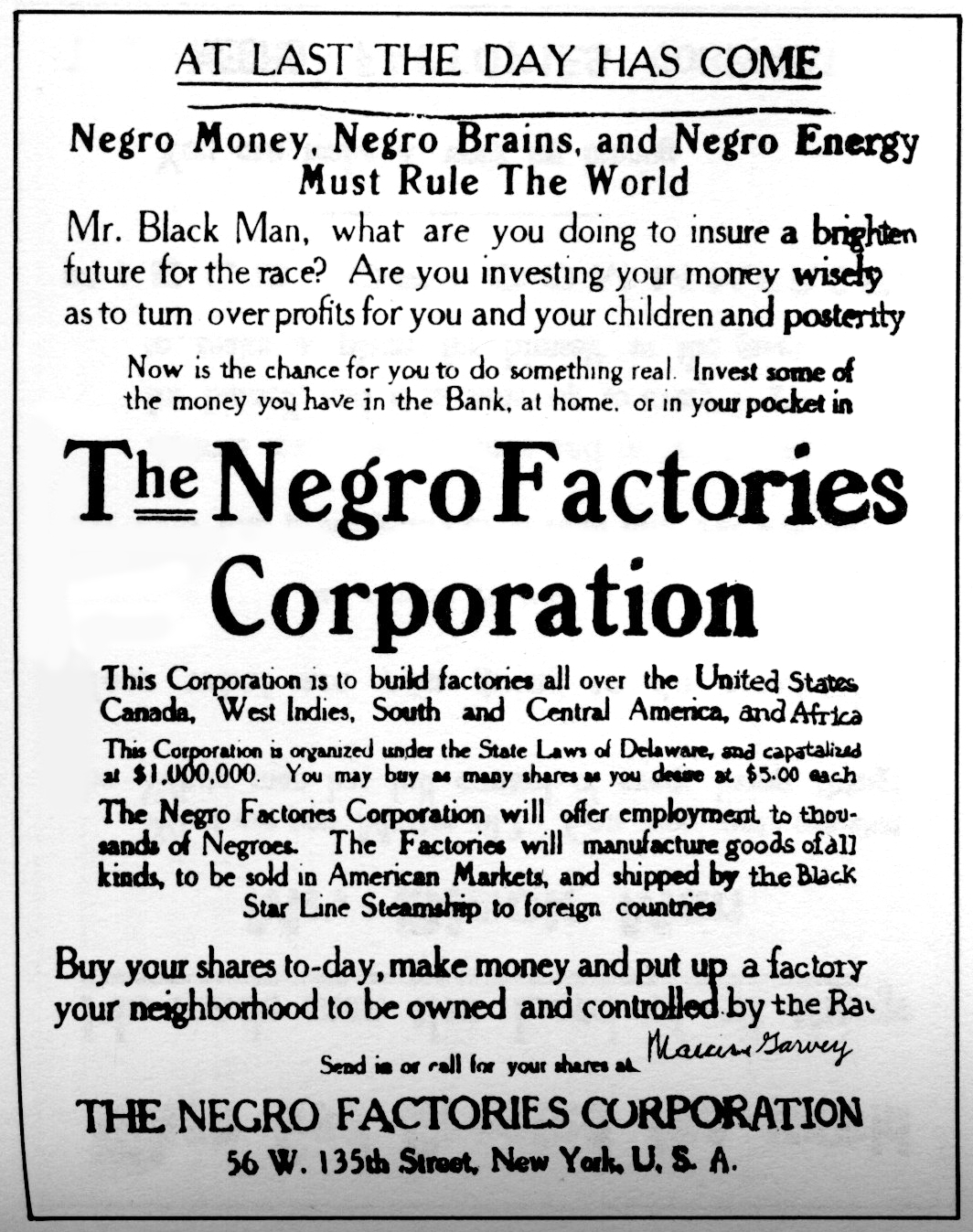
In 1919 Marcus Garvey established The Negro Factories Corporation. He wanted the corporation to produce factories, businesses and every product and service that Black people needed. He believed that economic success was the quickest and most effective way for Black people to achieve independence. He taught Black people that they should produce, market and distribute their own products and that they could completely rely on their own efforts.
Garvey said, "Why should not Africa give to the world its Black Rockefeller, Rothschild and Henry Ford? Now is the opportunity. Now is the chance for every Negro to make every effort toward a commercial, industrial standard that will make us comparable with the successful business men of other races."
Garvey offered stock in the The Negro Factories Corporation for Black people to buy. He raised one million dollars for the project.
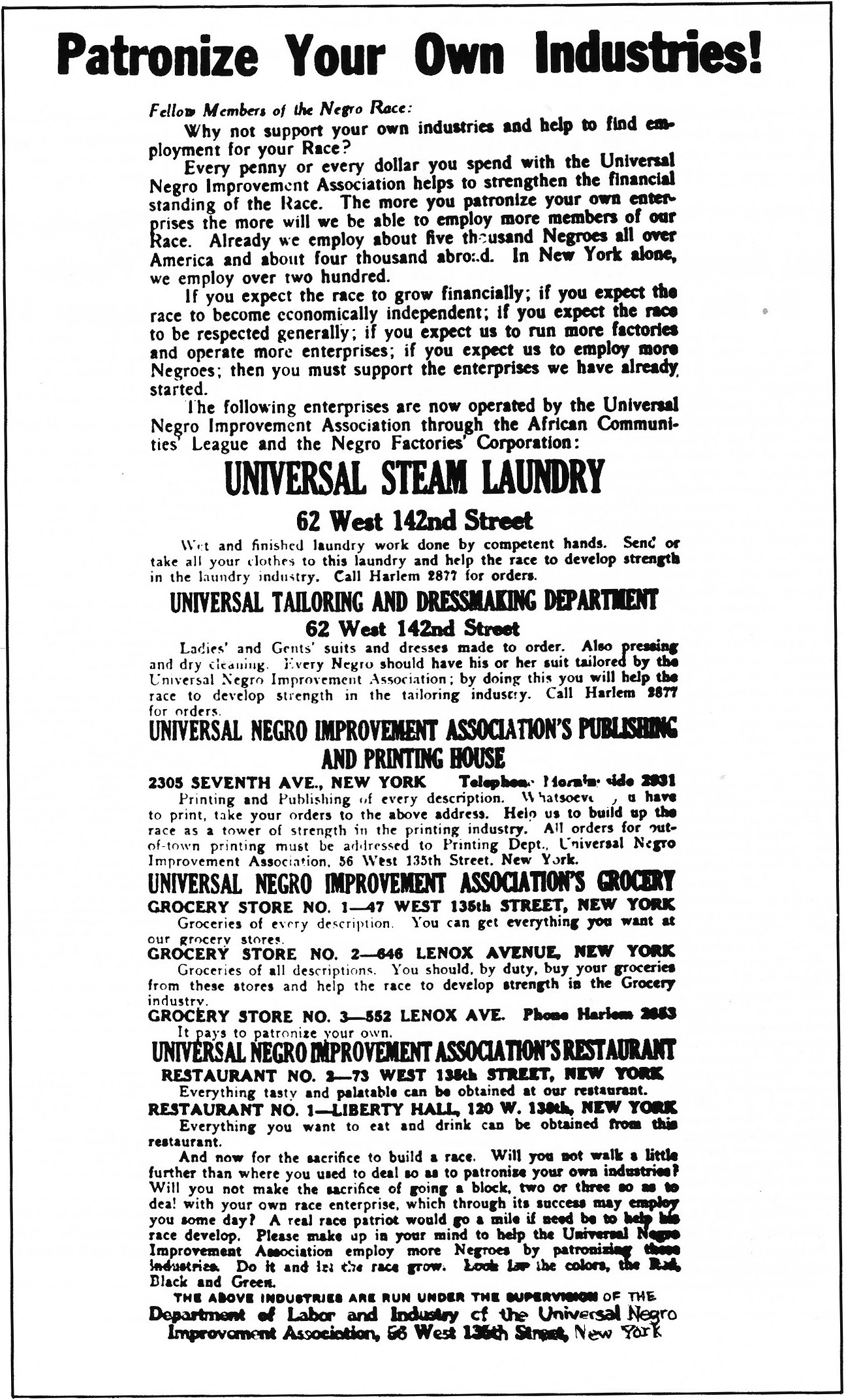
The Negro Factories Corporation provided hundreds of jobs for Black people and generated great income in its various business enterprises, including:
The Universal Steam Laundry opened with 50 employees.
The Universal Tailoring and Dress Making Department produced UNIA uniforms and fashionable clothing, which was displayed in fashion shows at Liberty Hall.
In New York City, Garvey also owned several buildings and a fleet of moving trucks. At the height of his success, Garvey employed over 10,000 Black people in the U.N.I.A. businesses and government worldwide.
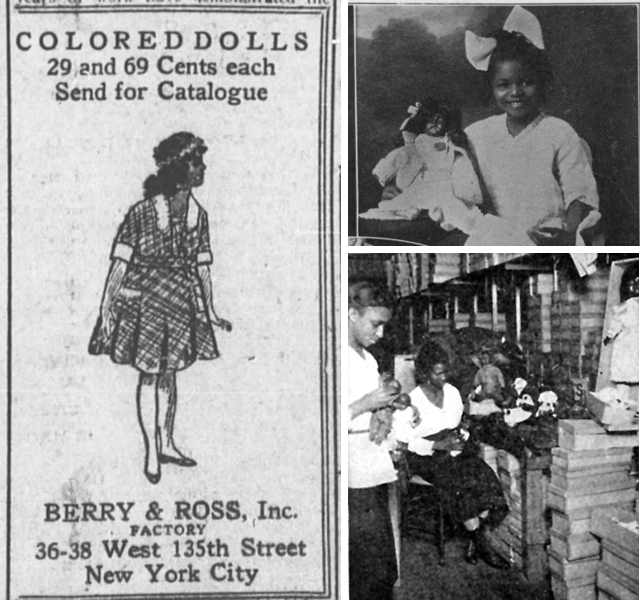
The Negro Factories Corporation began manufacturing Black dolls with Black features after they purchased the Berry & Ross, Inc. doll manufacturing company in 1922.
Marcus Garvey and U.N.I.A. leaders promoted the importance of Black children playing with Black dolls as a way to build self-esteem and race pride. As Garvey said to an audience, "Mothers! Give your children dolls that look like them to play with and cuddle."

Marcus Garvey had become a skilled printer in Jamaica and had worked jobs as a printer, writer and editor. He opened the Universal Publishing House in New York City to print materials for the U.N.I.A.
The Universal Publishing House printed:
With his own in-house printing facility, Marcus Garvey was able to get his message out, in print, to millions. The Universal Printing House printed hundreds of thousands of The Negro World newspapers each week, as well as notable books like "The Philosophies and Opinions of Marcus Garvey".
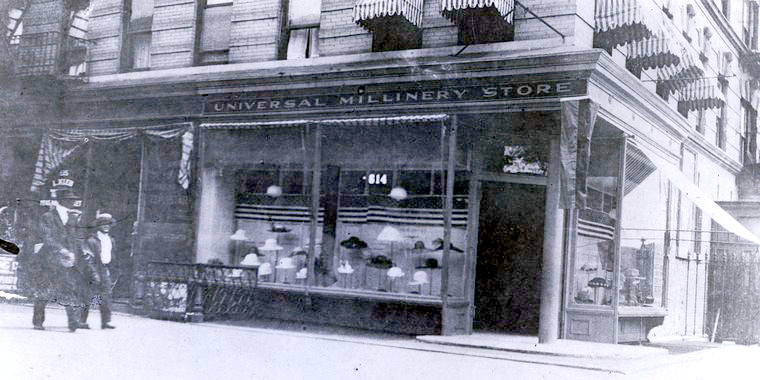
As Garvey wrote, "The Black man must depend upon himself - We need factories, mines, farms, ships, stores, mills, colleges and fisheries."
Marcus Garvey inspired Black people to build businesses all over the world. Furthermore, he got millions of Black people buying from Black-owned business.

At Marcus Garvey's 1922 U.N.I.A. convention, he announced the creation of the Phyllis Wheatley Hotel to house delegates, and the Booker Washington University which offered training in civil service, agriculture and commerce for UNIA officers.
The U.N.I.A. operated both the Phyllis Wheatley Hotel and Booker Washington University at the same location, a building located at 3-13 West 136th Street, New York, New York.
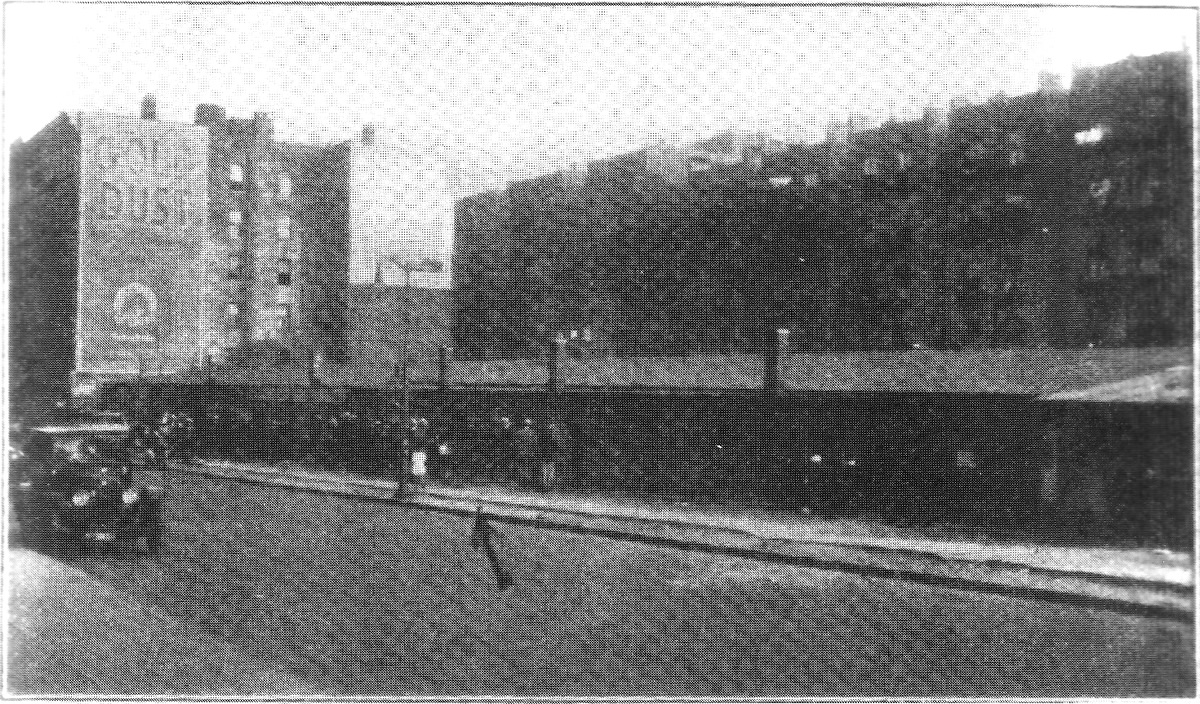
In 1919 the U.N.I.A. purchased a partially constructed church, located at 114 West 138th Street in New York City (Harlem). Only the first floor had been built. Garvey had a roof built on top of it and transformed it into a beautiful, one-story meeting hall which had a seating capacity of six thousand. Garvey called his new building "Liberty Hall". It was dedicated on July 27, 1919.
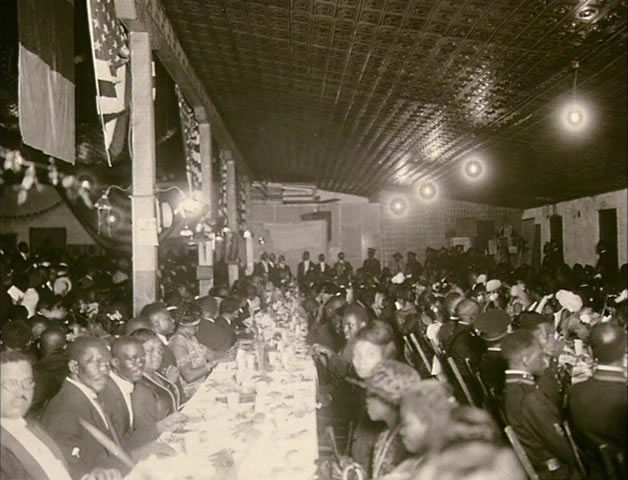
Liberty Hall was a place for the Black people to freely meet, socialize, conduct business and be educated in their own community. Many events were held at Liberty Hall in Harlem including plays, religious services, musical performances, weddings, receptions, etc. Marcus Garvey held weekly meetings of the U.N.I.A. at Liberty Hall on Sunday evenings that were attended by thousands of Black people at a time.
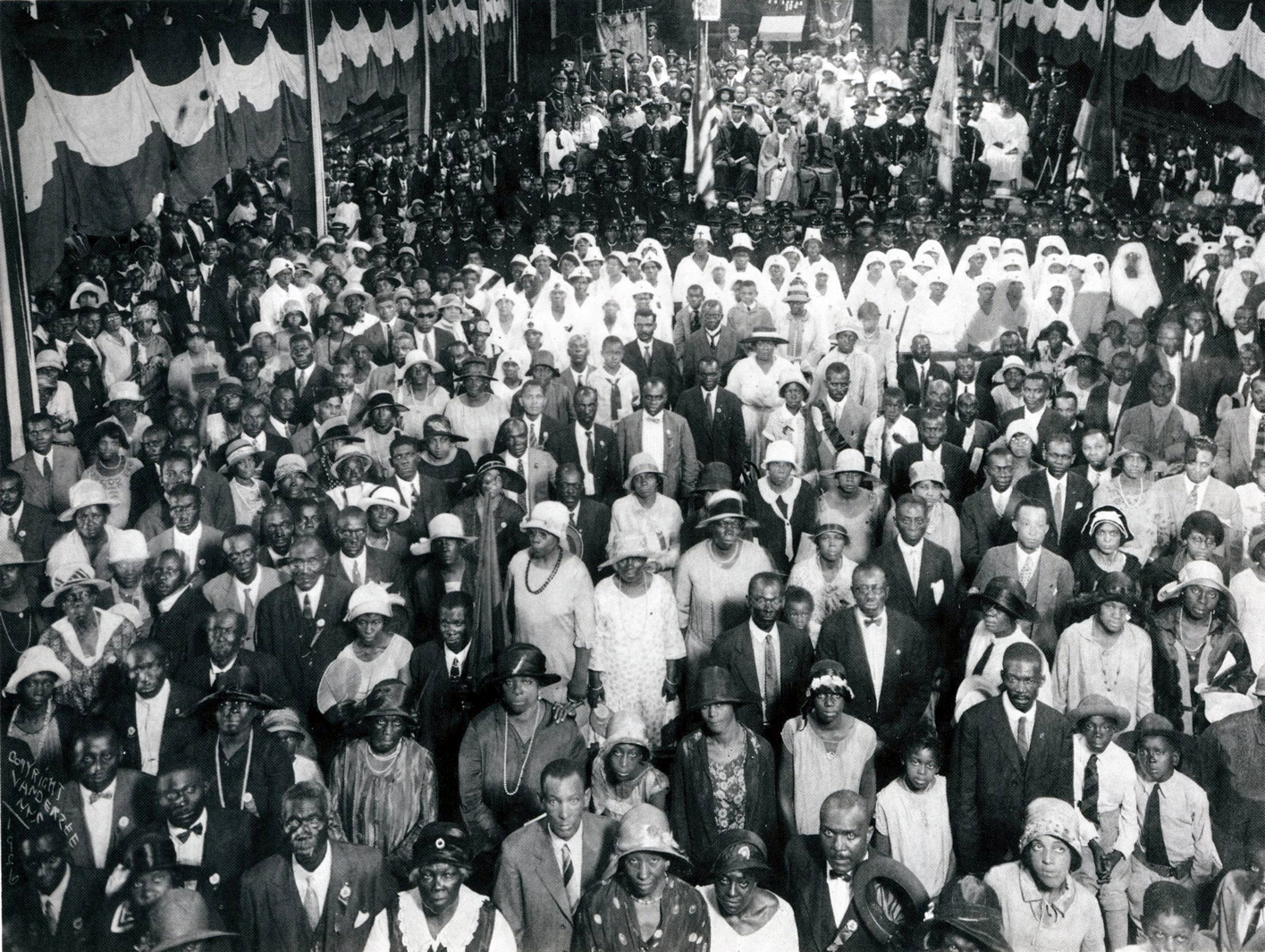
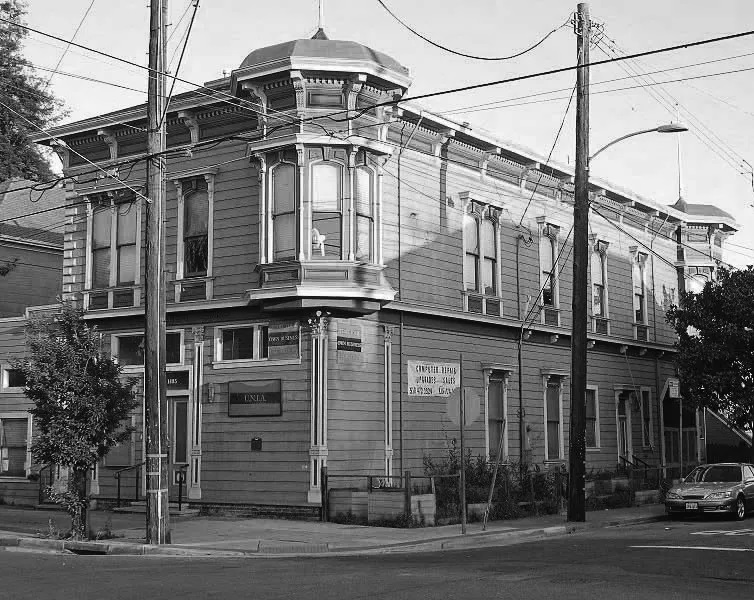
With the growth of its membership from 1918 through 1924, as well as income from its various Black businesses, the U.N.I.A. purchased additional Liberty Halls in the United States, Canada, Costa Rica, Belize, Panama, Jamaica, and other countries.
U.N.I.A. divisions everywhere also began establishing their own Liberty Halls in their communities as well. In time, hundreds of U.N.I.A. Liberty Halls were established worldwide.
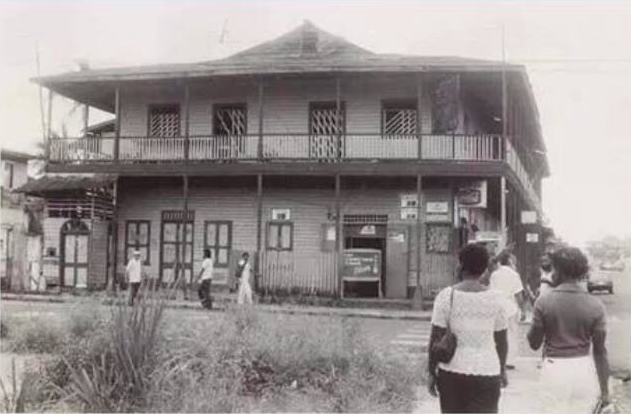
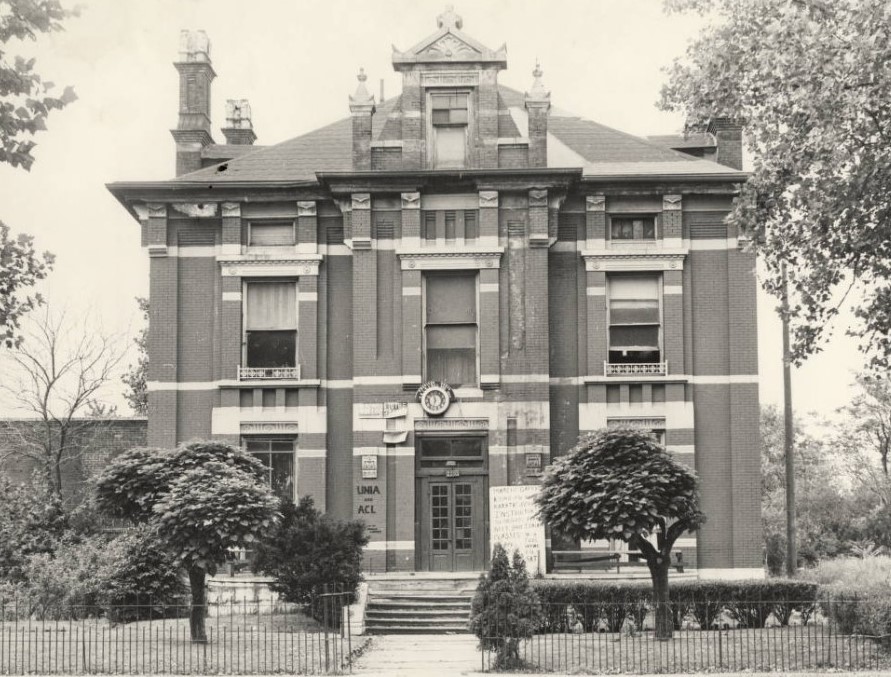
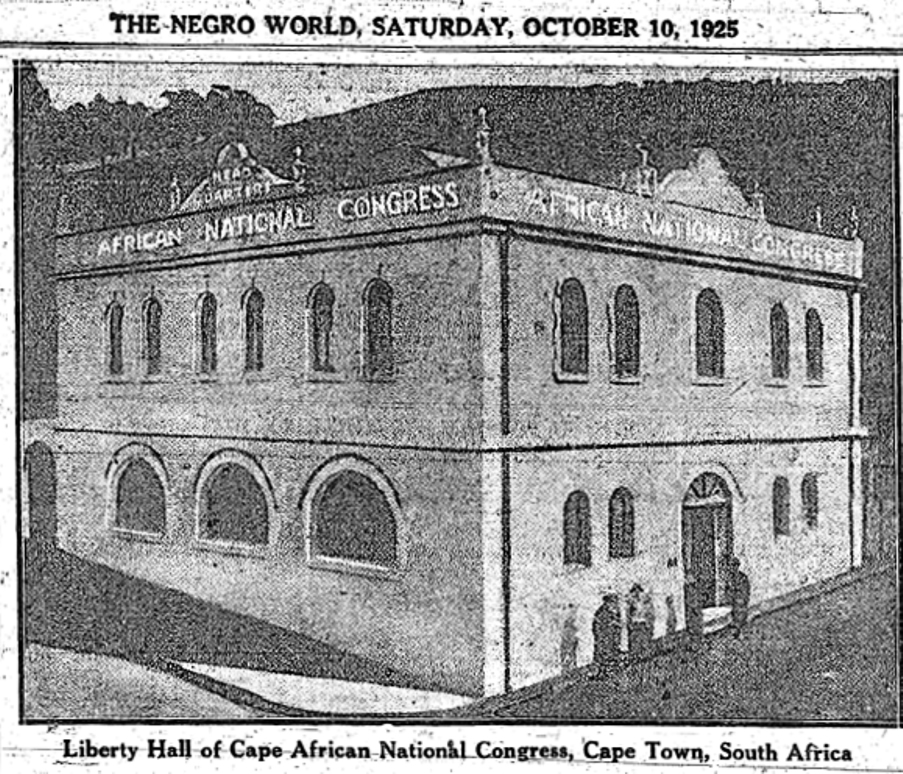
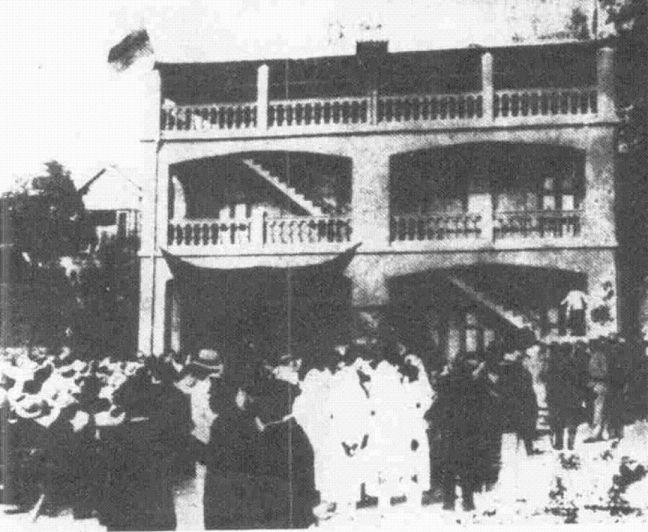

In addition to purchasing farms in Ohio and other states, the U.N.I.A. purchased the Smallwood-Corey Industrial Institute located in Claremont, Virginia in 1926. The school was originally founded by John Jefferson Smallwood, the grandson of Nat Turner.
The school property included several buildings and sixty-six acres of land on the south shore of the St. James River, where the second cargo of Africans were brought to America in 1622.
With its takeover by the U.N.I.A., the "John Hay Wharf", previously known as "Old Claremont Wharf" (the landing site for newly arrived Africans in the USA) could now be the launching point for Africans working to bring into existence a redeemed, renewed and revitalized Africa.
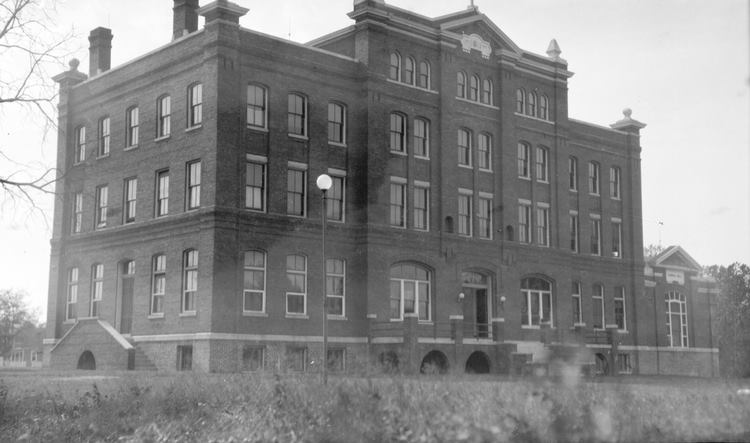
The U.N.I.A. transformed the property into Universal Liberty University and celebrated its grand opening in September, 1926. Beginning with the 1926 fall session, 56 young U.N.I.A. members became the first students at Liberty University.
The first commencement exercises were held on Sunday, May 29, 1927. The ceremonies spanned several days. Events included an oratorical contest, a play, an alumni meeting and an alumni dinner.

Marcus Garvey's most famous business venture was a shipping company known as the Black Star Line. Garvey started it in 1919 as a way to promote trade but also to transport passengers to Africa. He believed it could also serve as an important and tangible sign of Black success that would inspire the race.

The Black Star Line, Inc. was incorporated in Delaware as a U.S. domestic corporation on June 27, 1919. It sold shares of stock to both U.N.I.A. members and non-members alike. Each share cost five dollars and each person could purchase between two and two hundred shares. The Black Star Line began by raising ten million dollars in investment capital.
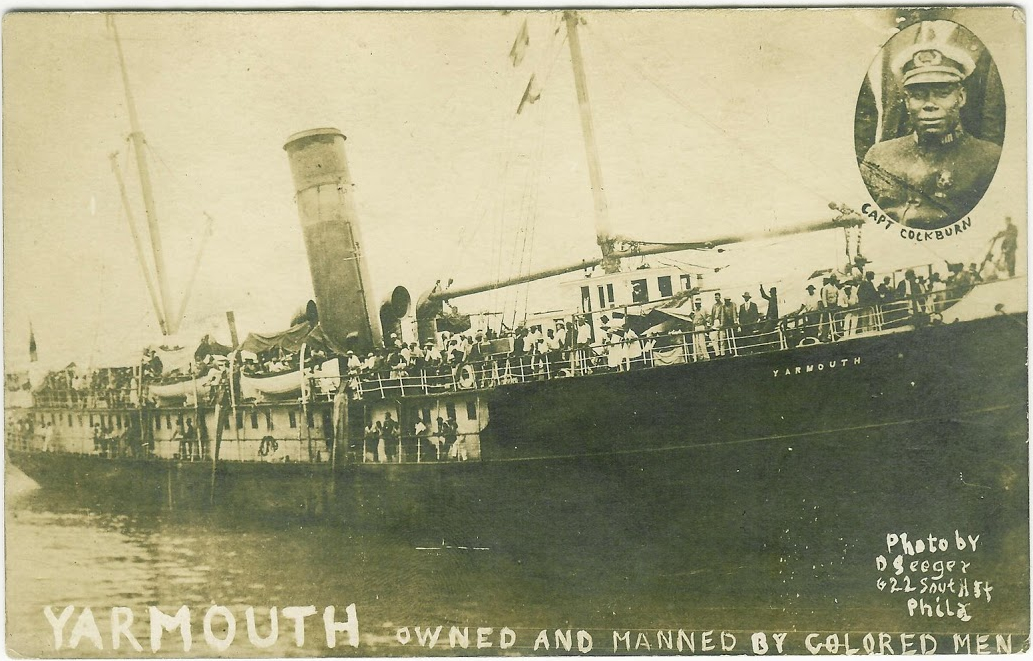
Proceeds from stock sales were used to purchase the first ship of the Black Star Line, the S.S. Yarmouth (later renamed the S.S. Frederick Douglass) for $165,000. It was 1,452 tons, 220 feet long, 35 feet wide and could carry 50 first class passengers as well as lots of cargo.
The sight of a Black-owned steamship with a Black captain and an all-Black crew was awe-inspiring and made news headlines all over the world. As the news and photos of Marcus Garvey's Black Star Line spread, millions of Black people flocked to join the U.N.I.A.
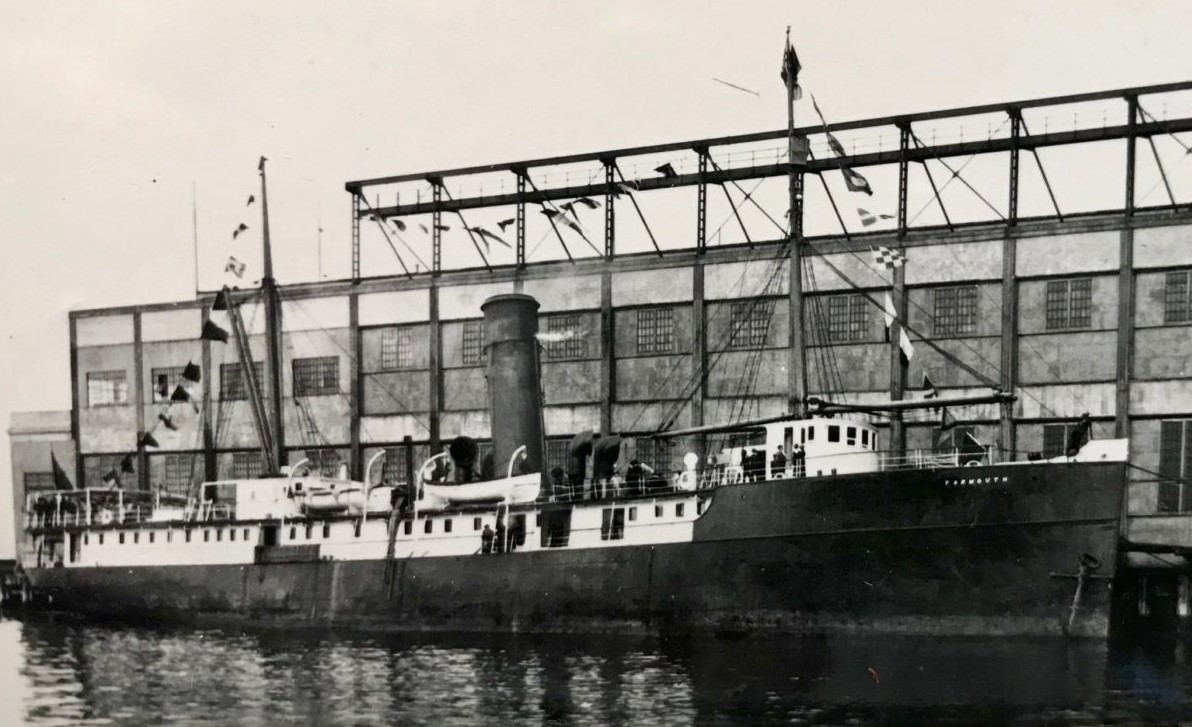
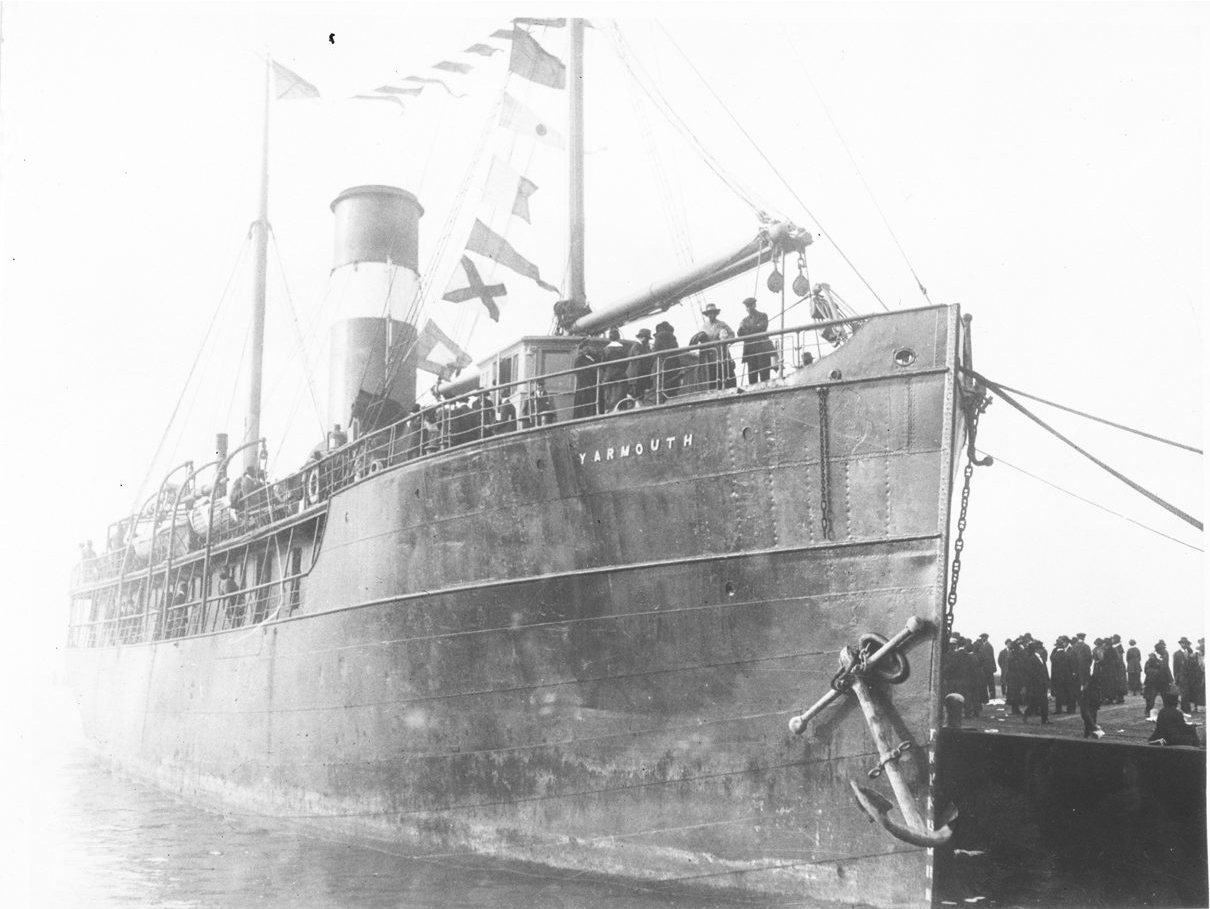
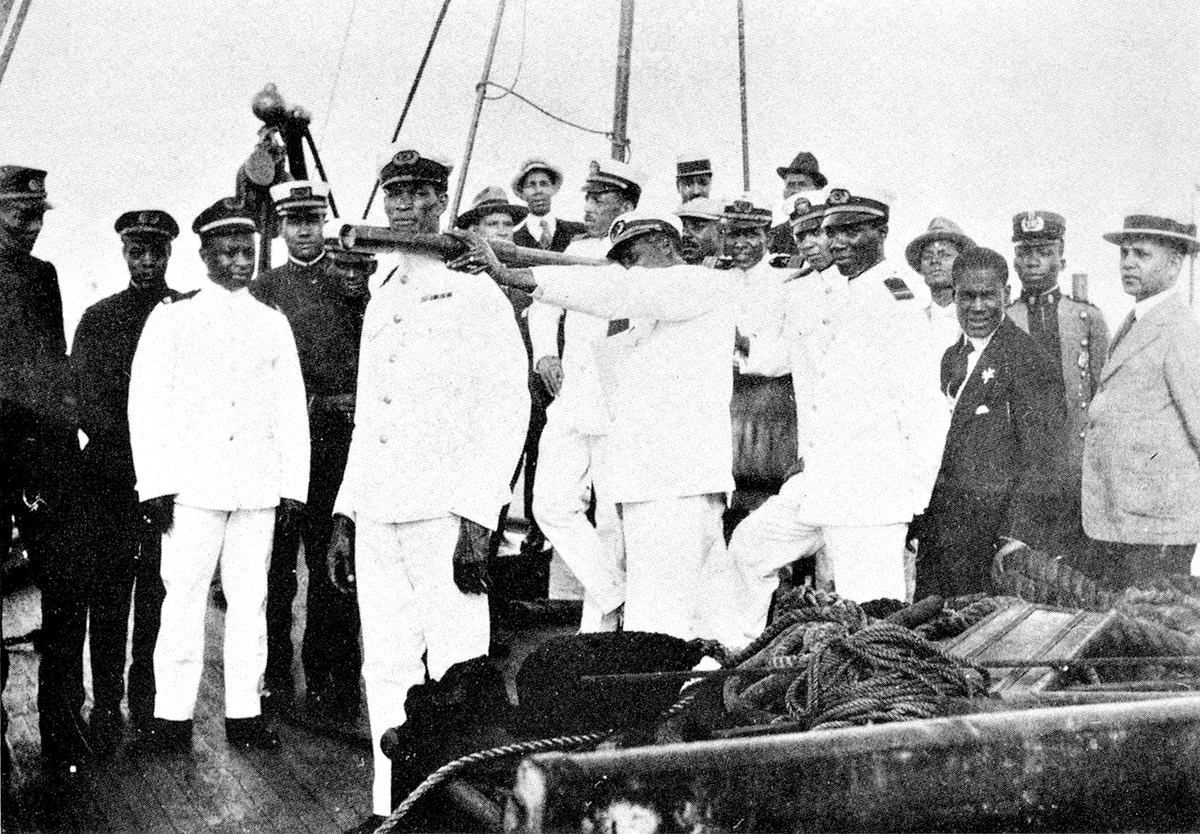
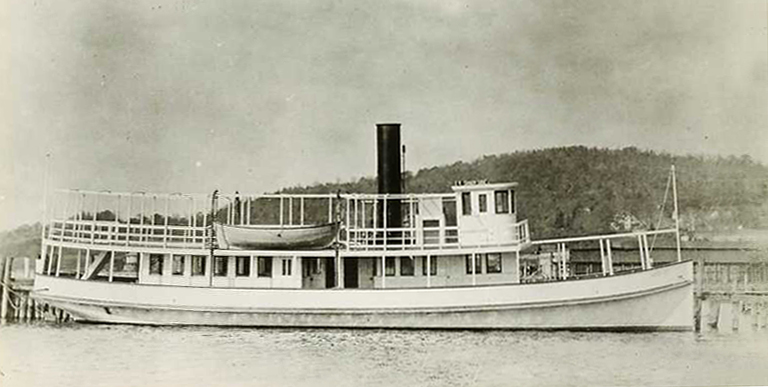
Later, the Black Star Line purchased the S.S. Shadyside riverboat for $35,000 which was used by the Association for summer outings and excursions, as well as rented out on charter to other organizations. The ship was 444 tons, 168 feet long and 27 feet wide.

As its third vessel, the Black Star Line purchased the Kanawha and rechristened it the S.S. Antonio Maceo. It was 475 tons, 227 feet long and 24 feet wide. This small yacht was intended for transportation between islands in the Caribbean.

In 1924, Garvey also established the Black Cross Navigation & Trading Company. This purpose of this company was to conduct international trade amongst Black people by moving raw materials and finished products back and forth between Black people all over the world.
Under this new shipping line, the U.N.I.A. purchased the large S.S. G. W. Goethels (formerly Grunewald) and renamed it the S.S. Booker T. Washington. It was 5,300 tons, 367 feet long and 48 feet wide. It could hold 70 first class and 100 second class passengers.
On January 18, 1925, a huge christening event was held at the West Harlem, New York Pier and then the ship set sail, taking UNIA officials to various ports in Central America, the Caribbean and southern United States.



Marcus Garvey held U.N.I.A. Conventions that drew thousands of Black people from all over the world. The conventions opened with a massive parade and then continued with regular sessions throughout the month. The conventions closed at the end of the month with ceremonies and festivities.
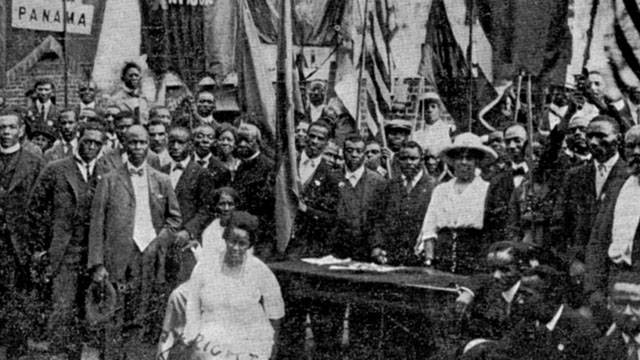
The first U.N.I.A. convention was held in New York City during the entire month of August, 1920. The convention started with an opening parade followed by a mass meeting at New York City's world-famous Madison Square Garden. 25,000 Black people packed Madison Square Garden to hear Marcus Garvey's keynote address. Afterwards, the rest of the convention was held at Marcus Garvey's Liberty Hall in Harlem. Thousands of delegates attended from 25 countries including the United States and Canada, as well as various countries in the Caribbean, Central America and West Africa.

At Madison Square Garden during his keynote address in August, 1920, Marcus Garvey said:
"We have met in this historic building tonight for the purpose of enlightening the world respecting the attitude of the 'New Negro'. If you believe that the Negro should have a place in the sun; if you believe that Africa should be one vast empire, controlled by the Negro, then arise, and sing the National Anthem of the Universal Negro Improvement Association."
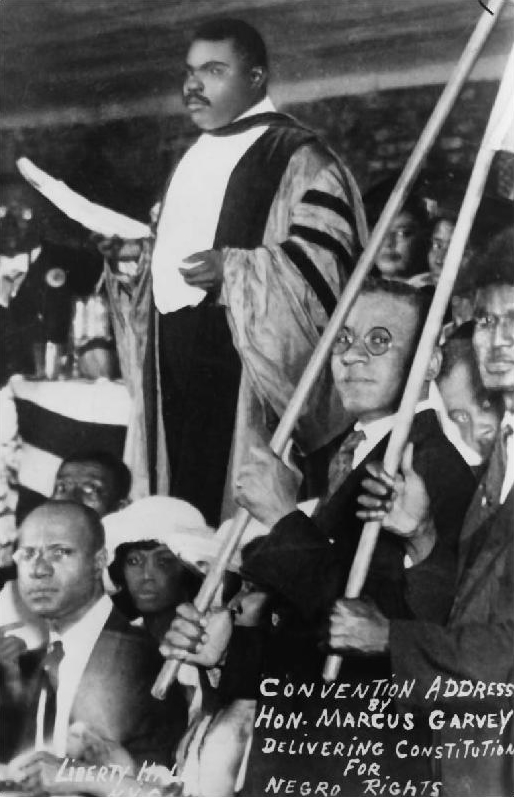
During the U.N.I.A.'s month-long August, 1920 convention, they discussed and created a revolutionary document called, The Declaration of Rights of the Negro Peoples of the World. The document lists 12 different complaints and 54 rights of Negro people. It was one of the earliest and most complete documents advocating human rights and detailing the abuses against Black people worldwide. It also sought the uplift of the Black race and encouraged self-reliance and nationhood.
On August 13, 1920, the delegates from 25 countries voted and made The Declaration of Rights of the Negro Peoples of the World official. One of the most notable of the 54 rights listed in the document was right #39 which says, "That the colors, Red, Black and Green, be the colors of the Negro race.".
You can read the full text of the declaration here.
As published later by the U.N.I.A. in the 1921 "Universal Negro Catechism":
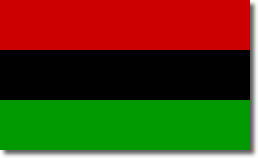
The red, black and green flag has become a symbol of Black unity and pride all over the world. Many African countries sport the colors in their flags, symbolizing their inspiration by Marcus Garvey, including Ghana, Kenya, Malawi, Libya, and Saint Kitts.
The red, black and green flag also became a symbol of Black pride, Black power, and Black nationalism in the 1960s. The African American holiday Kwanzaa, founded in 1966, uses the colors red, black and green as well.
TAG TEAM Marketing proudly includes the red, black and green flag in the Buy Black Movement's logo.
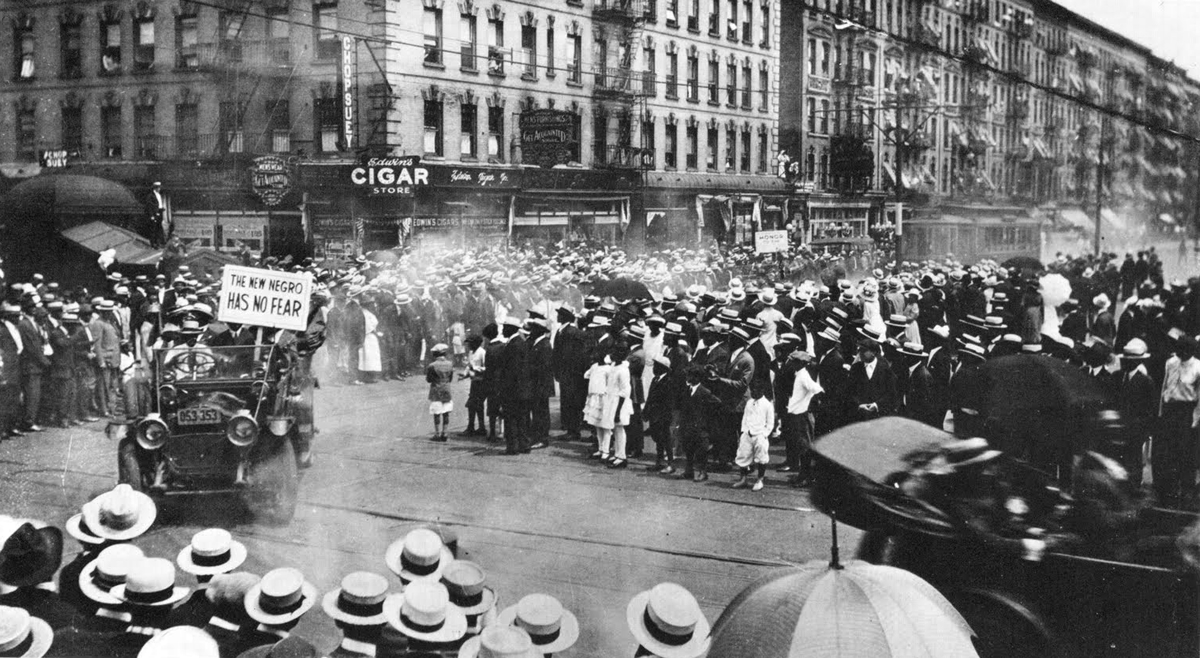
Marcus Garvey understood the importance of gathering Black people together to experience Black unity and instill race pride. Garvey held phenomenal conventions, the likes of which had never been seen before. Garvey opened his conventions with parades in Harlem that featured over 100,000 Black people marching down New York City streets, with a dozen marching bands, followed by hundreds of cars and auto buses, in a procession that stretched ten miles long.

In the parades, U.N.I.A. members carried banners with the inscriptions: "Africa for the Africans!", "The Negro Wants Liberty!", and "Liberty or Death!" amongst other sayings. They were the greatest parades ever staged by Black people, anywhere in the world, at the time.
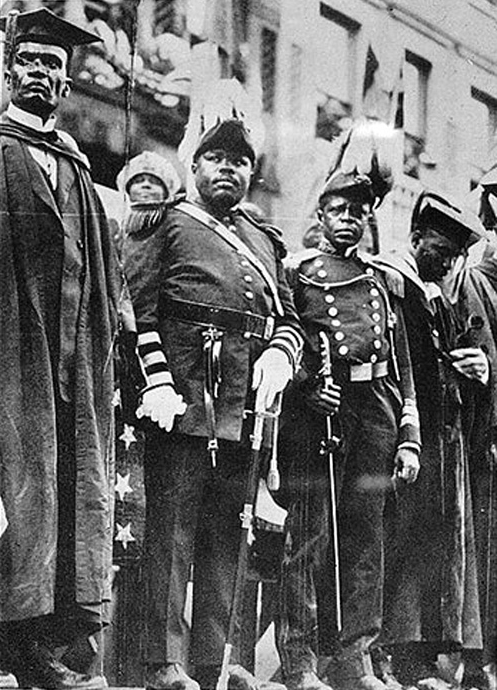
Marcus Garvey himself wore a purple and gold uniform with a feathered helmet.
In these parades, members of the U.N.I.A.'s various auxiliary organizations wore their uniforms and marched proudly as the finest examples of Black excellence, discipline and unity that most people had ever seen.

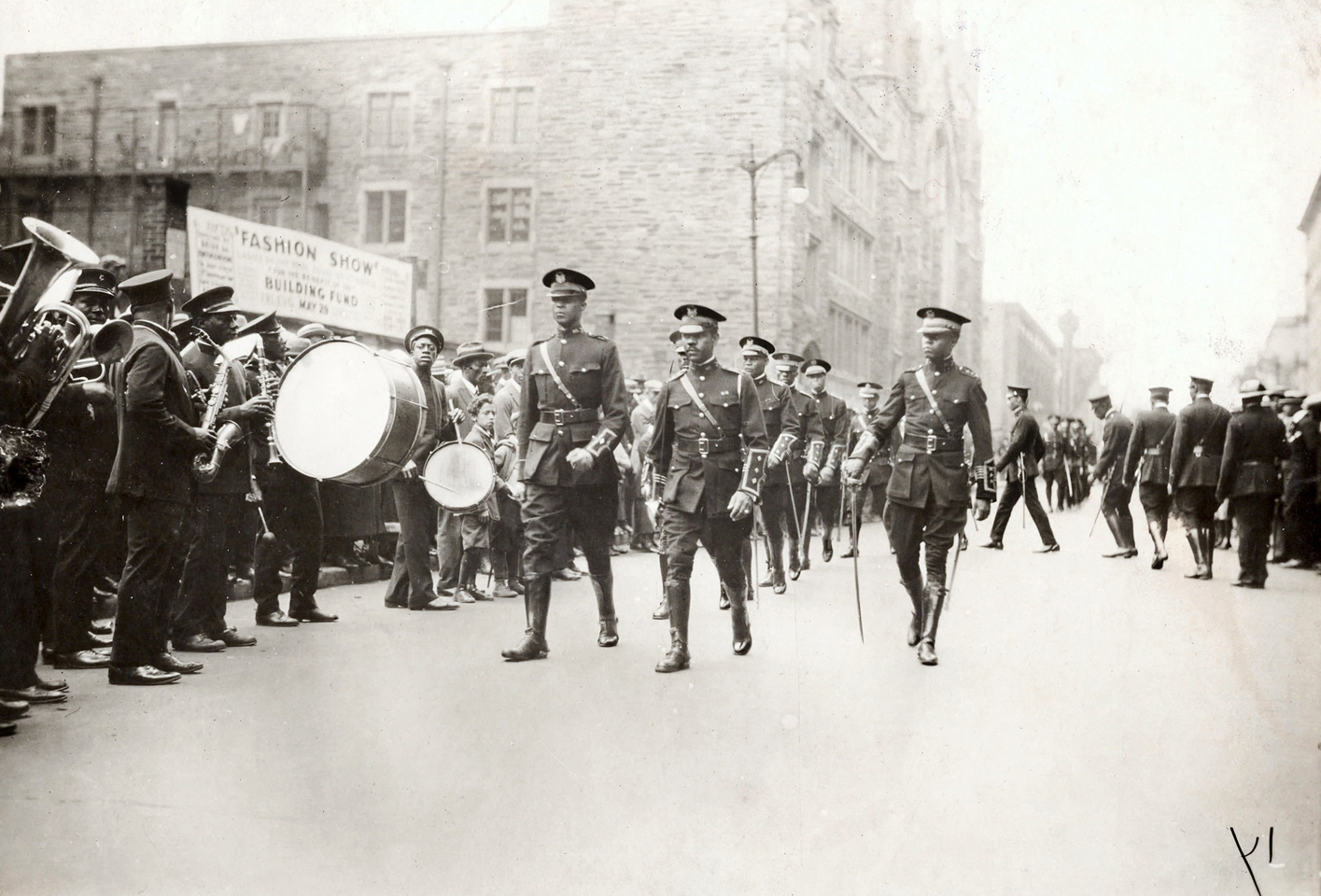

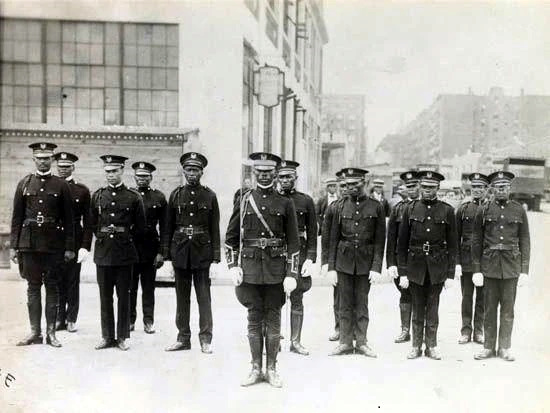
The U.N.I.A. has several auxiliaries (a group that assists in a supporting capacity) within it that worked towards the overall goals of the U.N.I.A.
Members of the U.N.I.A.'s male Universal African Legion studied military discipline as well as the geography of Africa, mathematics, reading and writing and other subjects. They were prepared for defense in the event of a race war.
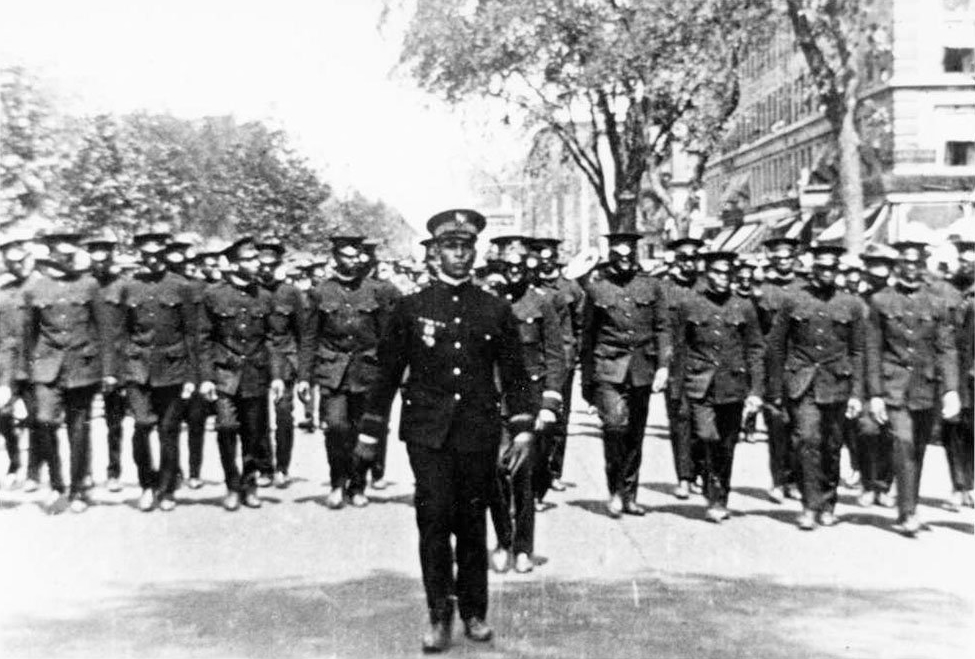
The Universal African Legion marched in formation at U.N.I.A. parades. They dressed in striking dark blue military uniforms and were the most awe inspiring group of Black men ever seen by most Black people of the day.


The Universal African Motor Corps was the all-female military division of the U.N.I.A.
Marcus Garvey had a very high view of Black women and wanted them to feel at home in the organization. As Garvey said, "What the night is to the day, is woman to man". He even wrote poetry about Black women, including "Black queen of beauty, thou hast given color to the world! Among other women thou art royal and the fairest!"
Black women served as U.N.I.A. regional, national, and international organizers and as local officers. They sold stock for the Black Star Line and helped arrange and run U.N.I.A. programs and meetings. Every local branch had a "lady president." and individual women were stars in the national and international leadership of the U.N.I.A.

The Black Women of the Universal African Motor Corps were trained in military discipline, as well as automobile driving and repair. They were specifically trained to operate ambulances in the event of a race war, in conjunction with the Black men of the Universal African Legion.
The inclusion of an all-female military unit was revolutionary at the time. The Universal African Motor Corps was a source of tremendous pride in the Black race. The Sisters marched in the U.N.I.A. parades in beautiful red, black and green uniforms.

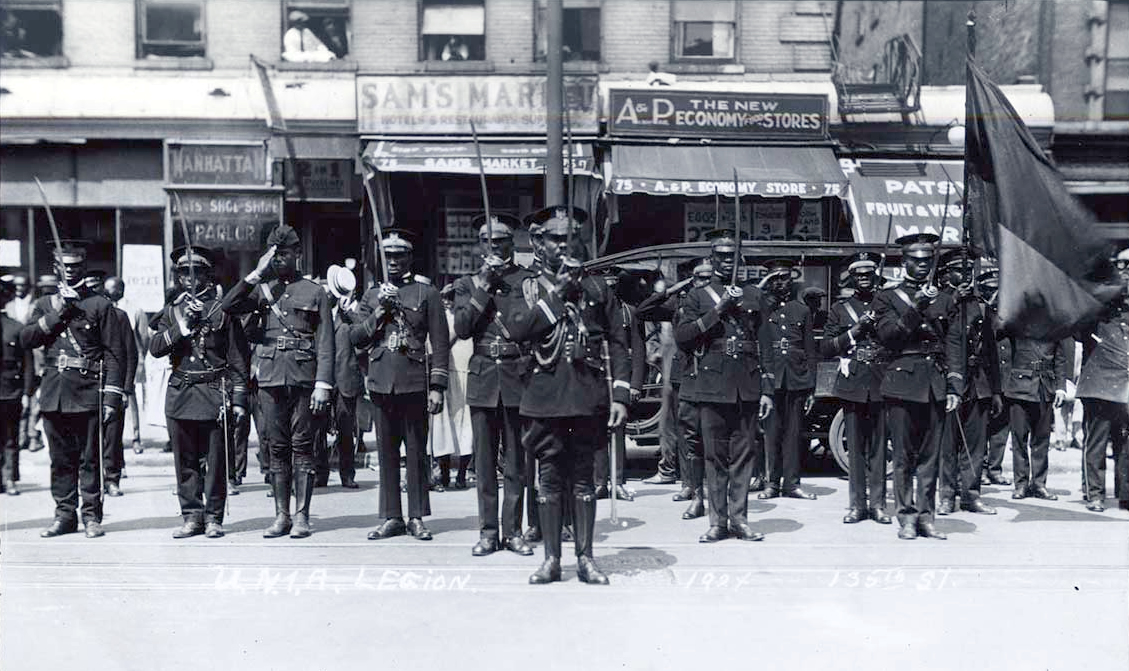
In 1924, the U.N.I.A. established a special regiment of the Universal African Legion called the "Universal African Royal Guard" to be stationed at the headquarters of the Universal Negro Improvement Association in Harlem, New York.
Members of the Universal African Royal Guard had slightly different uniforms and are sometimes seen in photos carrying swords.

Some members of the Universal African Royal Guard even rode horseback during the parades.

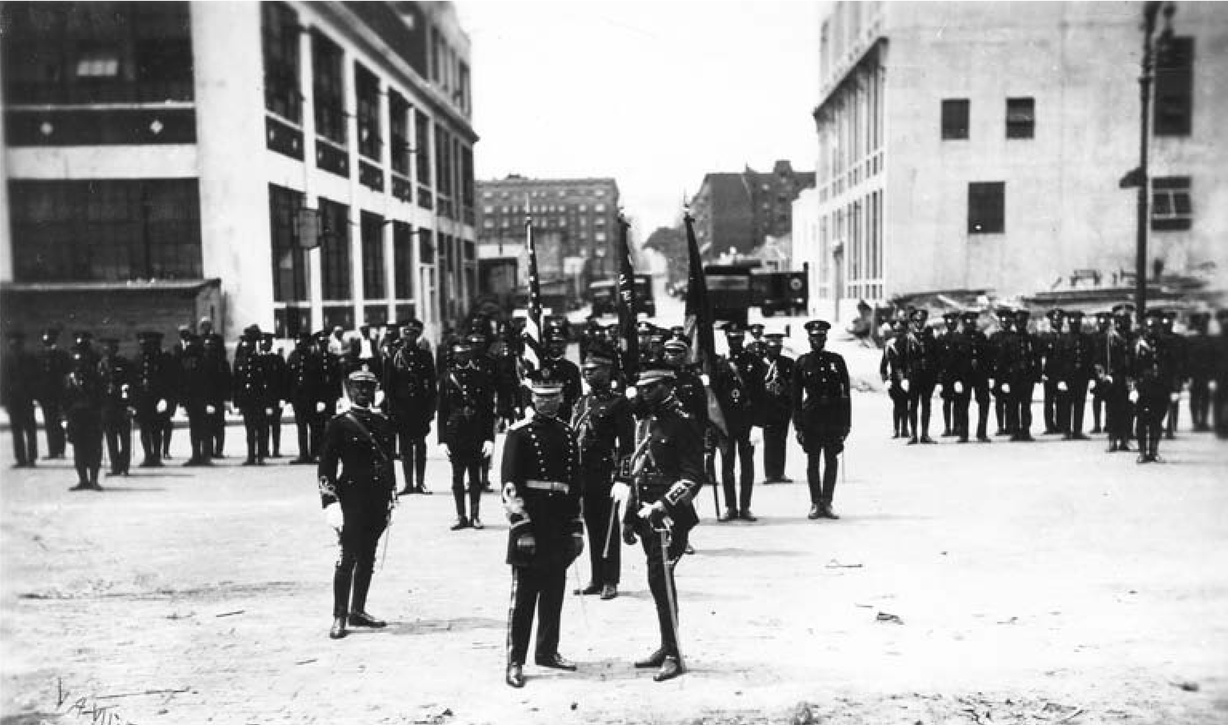

Marcus Garvey's Black Cross Nurses were modeled after the Red Cross. They were an international network of Black nurses who met the needs of the Black community, since Black people didn't have access to the public health system like whites did. Some members had formal medical training, while most received practical training in first aid and nutrition. They performed benevolent community work and provided public health services to Black neighborhoods. They performed regular home and hospital visits, administered needed medicine, and cared for pregnant women and new mothers who were ignored by public health institutions. Tens of thousands of Black women participated in the Black Cross Nurses, all over the world.
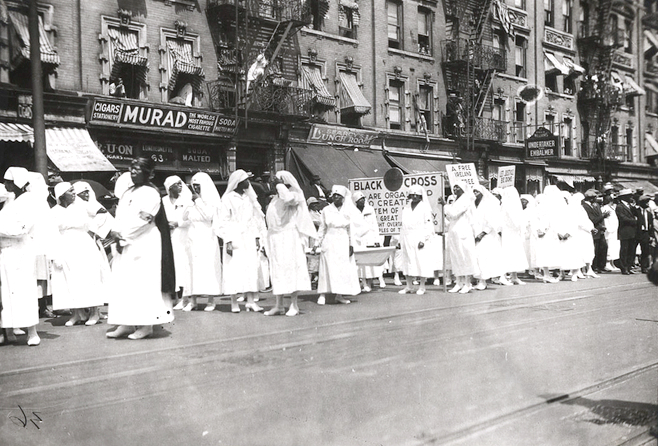
In U.N.I.A. parades, the Black Cross Nurses wore green nursing uniforms or long hooded white robes including shoes, stockings and a cap adorned with a black cross encircled by a red background with a green center.

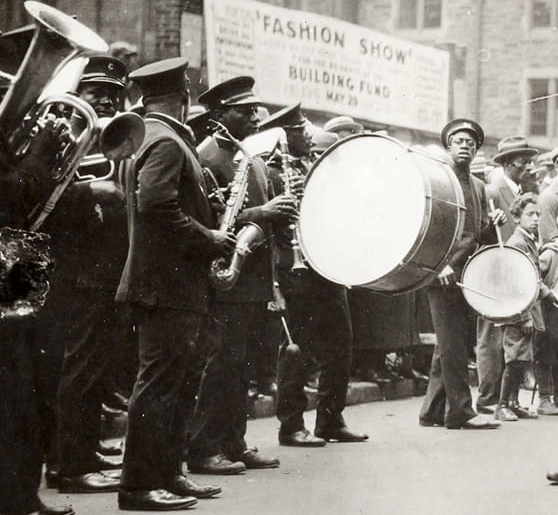
Members of the Musical Detachment of the Universal African Legion were a band and orchestra that often accompanied the U.N.I.A.'s uniformed auxiliary groups. They played at various functions at Liberty Hall in Harlem, during U.N.I.A. parades and at other events.
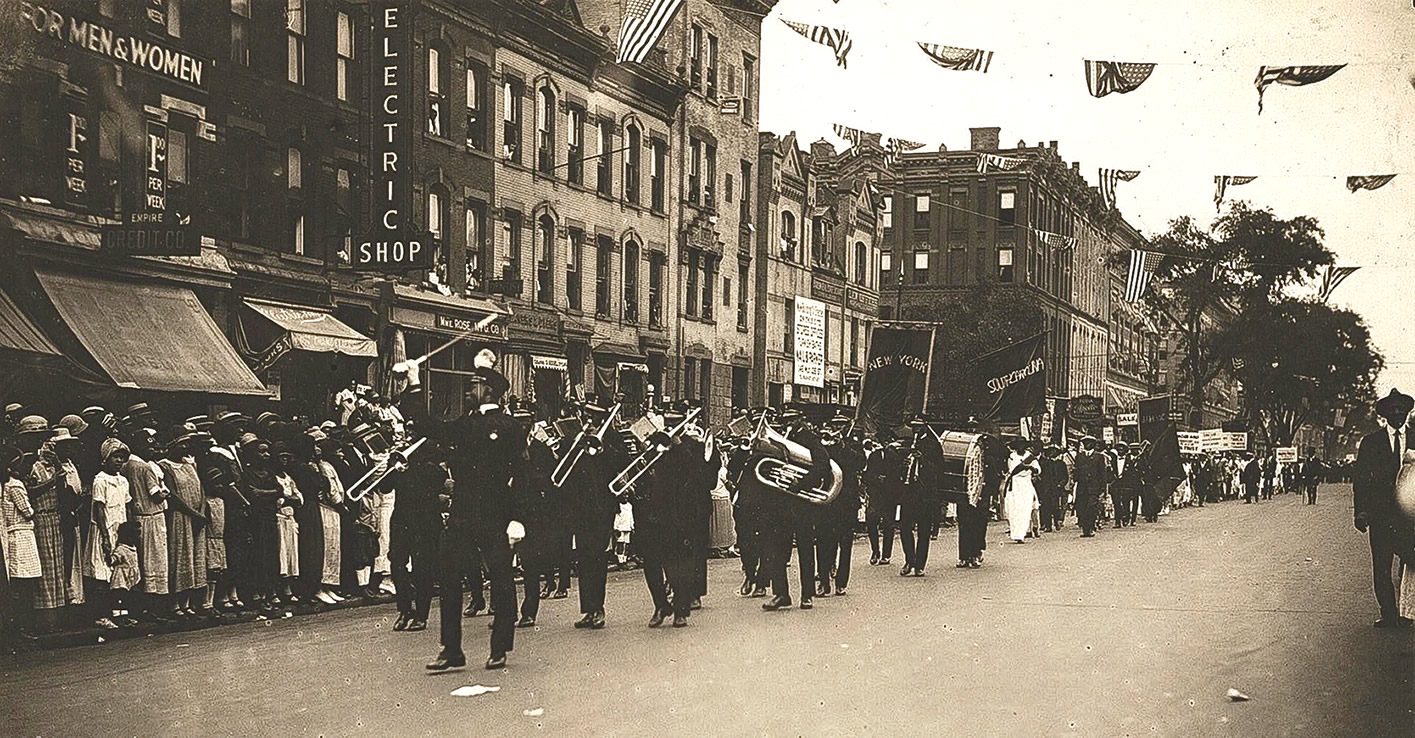

The Juvenile Divisions, the youth corps of the Garvey movement, were divided into classes according to age. The infant class (ages one through seven) studied the Bible, the doctrine of the U.N.I.A., and the history of Africa.
After the age of seven, the children were divided by sex. Girls were taught sewing, boys woodcraft, and both received further instruction in Black history, economics and etiquette.
After the age of thirteen, boys received military training to prepare them for membership in the African Legion, while girls learned hygiene and domestic science in order to prepare them to be Black Cross Nurses.
In the U.N.I.A. parades, the boys marched in blue uniforms and the girls in green dresses.


As described earlier, Marcus Garvey and the U.N.I.A. were preparing to build their new colony in Liberia, West Africa. Millions of U.N.I.A. members all over the world were preparing to travel to Liberia to live on the new land. The U.N.I.A. had sent two ships of building materials and engineers from New York, United States to Liberia to begin construction of the first colony at Cavalla River.
The U.S. government didn't want this to occur. They wanted Firestone Tire and Rubber Company of America to get the land instead. Herbert Hoover (future president of the United States), then Secretary of Commerce, arranged a special government loan for Firestone Tire and Rubber Company to be able to get the same land already promised to Garvey. Once the loan was secured, they had to convice Liberia to give the land to Firestone instead.

The U.S. government knew that the Liberian President wouldn't listen to a white man, so they got Marcus Garvey's biggest critic, W.E.B. Du Bois, to go to Liberia to convince them not to give the land to Garvey.
Du Bois believed that Black people could excel through cooperation with whites, rather than by separating and building their own country as Garvey was intending. Du Bois felt that white American money working in partnership with "Black educated men, both African and American" might create an industrial plantation of "mutual dependence and prosperity," like none seen before.
The U.S. government gave Du Bois official U.S. diplomatic status, but Du Bois had to pay for his own ticket to travel to Liberia. Du Bois went to Liberia and spent months there convincing Liberian President Charles King NOT to give the land to Marcus Garvey, but instead to give it to Firestone Tire and Rubber Company of America.

Liberia then reneged (backed out) on their promise to give the land to Garvey's U.N.I.A. to colonize. Instead, they leased the million acres of land to Firestone Tire and Rubber Company at six cents an acre for a hundred years, compared to the dollar an acre lease agreement with the U.N.I.A.
Immediately afterwards, President Charles King of Liberia ordered that any member of "The Garvey Movement" trying to enter the country be refused entry. The Liberian government also arrested and deported the U.N.I.A. engineers assigned to construct houses, and seized $50,000 worth of construction material meant for the future settlers.
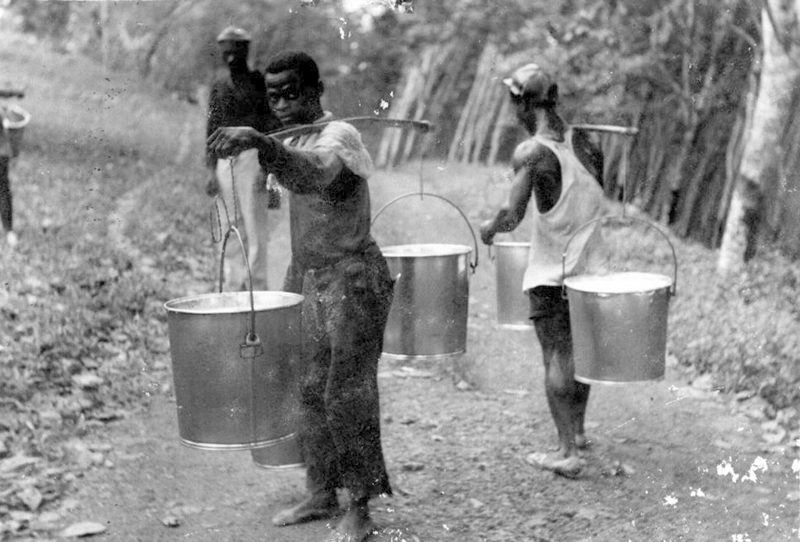
Firestone went on to build a massive "American South-style" plantation on the land that was promised to Garvey, complete with managers (masters), laborers (slaves) and overseers. At their peak in the late 1940s, the Firestone Plantations employed approximately 30,000 Black Liberians which were supervised by roughly 125 white managers.
Most of the Black employees were "tappers". Tappers were laborers who made little cuts in the bark of rubber trees, allowing the white liquid tree sap (called latex) to drip out into cups. They would later collect the cups from the trees and pour them into buckets. When the buckets were full of latex, they would carry them back to the factory to be processed into rubber. Tappers were only paid 18 cents per day.
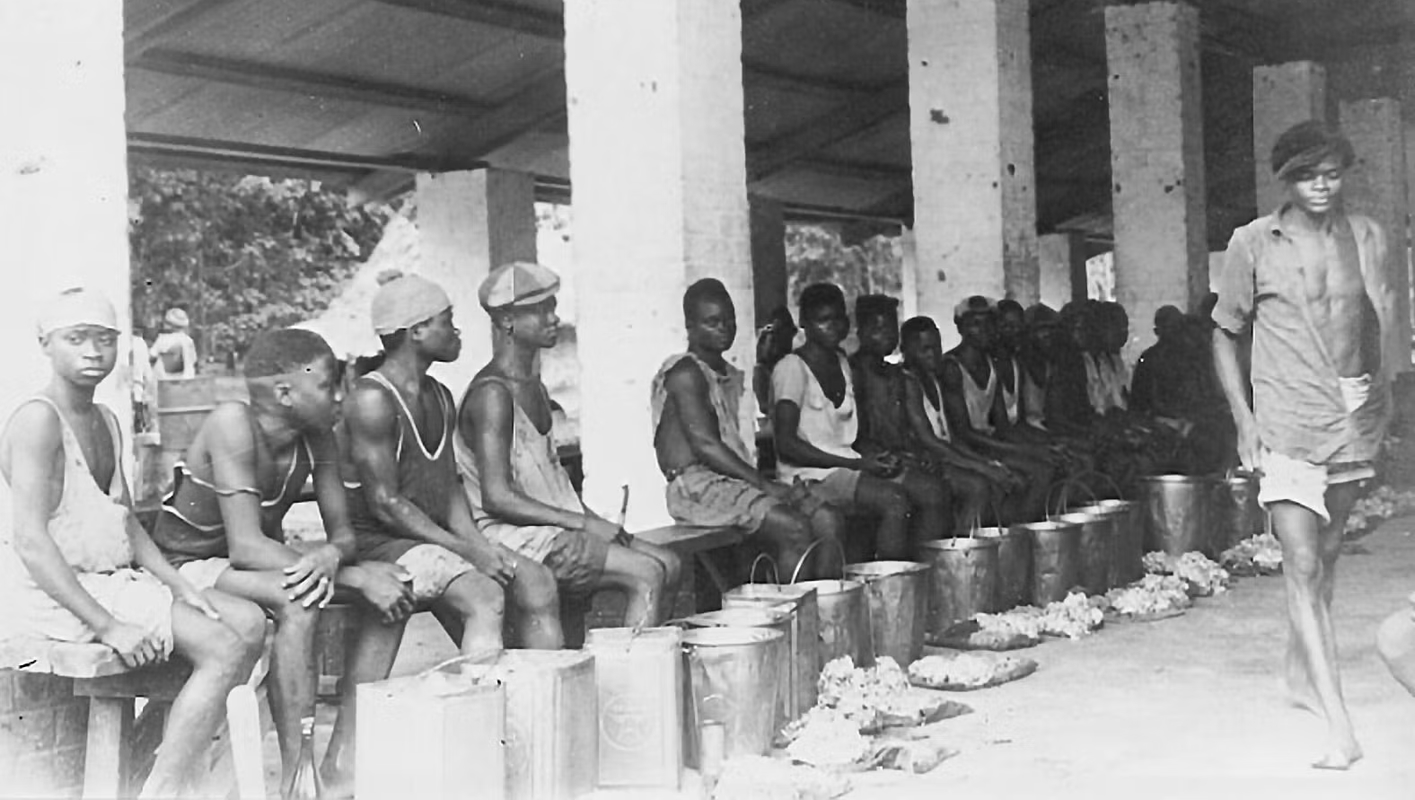
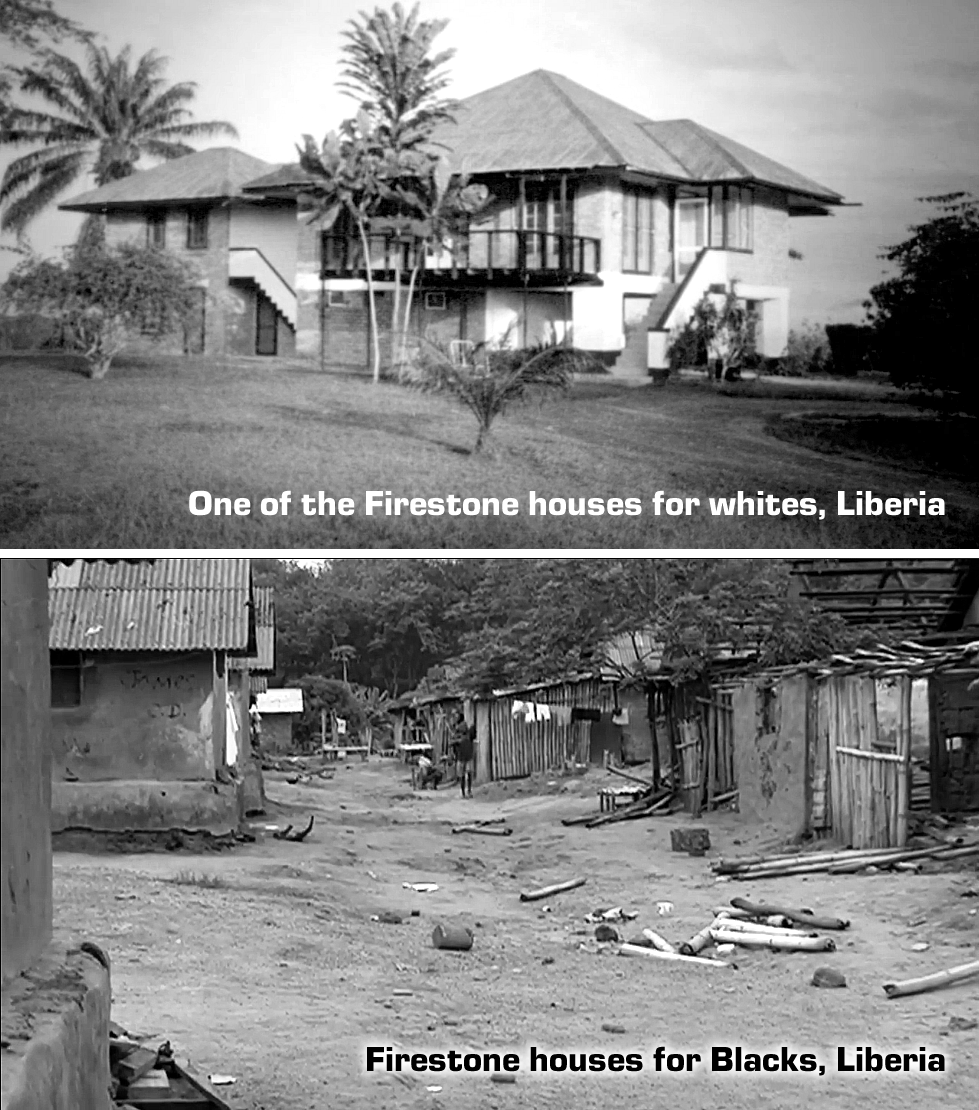
The Firestone plantation exploited their Black workers and was full of racial discrimination and white supremacy. Salaries, housing and health care for white managers was far superior to that of the Black laborers.
The whites lived in large, well-furnished plantation homes, while the Blacks lived in poverty, in one-room shacks. The shacks had no running water or electricity. Toilet and water facilities for Blacks were outside and shared. Cooking was done outside on the porch.
To further add insult to injury, the newsletter of the whites-only Firestone Overseas Club, called "Planter's Punch", contained racist characters and jokes, demeaning the Liberians whose land and labor made them rich.

If Marcus Garvey and the U.N.I.A. had settled on that land in Liberia, none of that would have happened. Instead, Garvey said that U.N.I.A. members would have helped Liberia dominate the rubber industry.
When Garvey learned of this betrayal in 1924, he was crushed. It meant that the last available land they could settle on the continent of Africa was gone. This was a serious setback for Garvey since he had millions of members, a U.N.I.A. government, a military and ships, all ready to go home to their new country in Africa, and now... nowhere to take them.
Almost 10 years later, in view of the racist treatment of Black workers on the Firestone Plantation in Liberia, W.E.B. Du Bois realized his mistake in convincing Liberia to give the land to Firestone and became one of Firestone's most vocal critics. He never apologized to Marcus Garvey.

J. Edgar Hoover was a young junior attorney working for the U. S. Department of Justice. He became the head of the Burea of Investigation, which later was renamed the Federal Bureau of Investigation (F.B.I.). J. Edgar Hoover led an effort to create false charges against Marcus Garvey. He hired the first Black F.B.I. agents to infiltrate Garvey's organization.
The first agent hired was Agent 800, James Wormley Jones, whose assignment was to go into Garvey's Harlem office, infiltrate the Garvey movement and to try and find evidence that could be used to build a legal case to get rid of Garvey. Over the next five years, largely under J. Edgar Hoover's direction, Bureau of Investigation officers would report on U.N.I.A. activities in over two dozen cities, and the pursuit of Garvey would broaden to seven other federal agencies. They were determined to find some way of getting rid of Garvey because they feared his influence.
J. Edgar Hoover's determination led him to take extreme measures to counter Garvey's growing influence. Hoover placed more spies in the U.N.I.A. The spies stole money from the U.N.I.A. The spies even sabotaged the Black Star Line by throwing foreign matter into the fuel and poking holes in the hull. This led to a boiler exploding, an engine fire and one Black Star Line ship sinking in New York Harbor. The public was told, however, that Garvey was a bad businessman and had purchased old, defective ships.
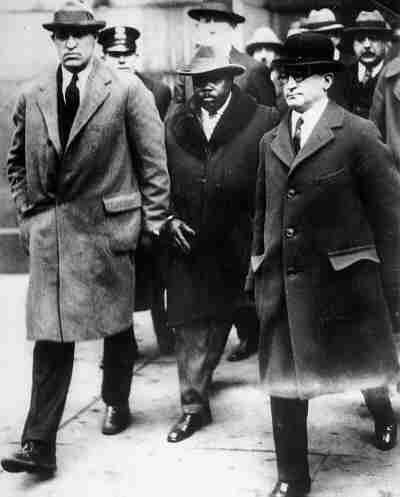
Then, with no real evidence, Garvey was arrested for "mail fraud". The prosecution argued that one person had received a flyer in the mail from Garvey's Black Star Line office advertising to buy stock in the Black Star Line, however, the ship on the flyer was one that the Black Star Line was negotiating to buy, but didn't own yet. This technically was "fraud". In court, they could not produce the supposed flyer. All that was presented was an empty envelope.
Despite the lack of evidence, Marcus Garvey was tried and convicted of mail fraud on June 23, 1923 in New York and sentenced to five years in prison in Atlanta, Georgia.
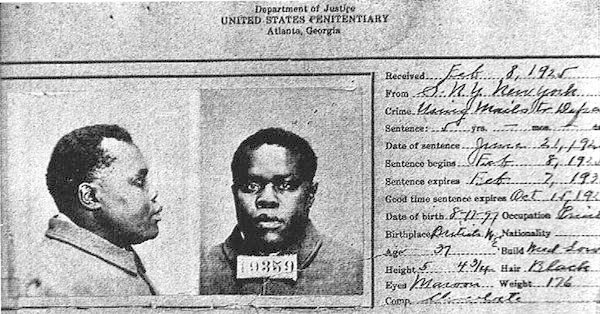
On February 8, 1925, Marcus Garvey entered Federal Prison (Atlanta, Georgia Federal Penitentiary) and began serving a 5-year sentence.
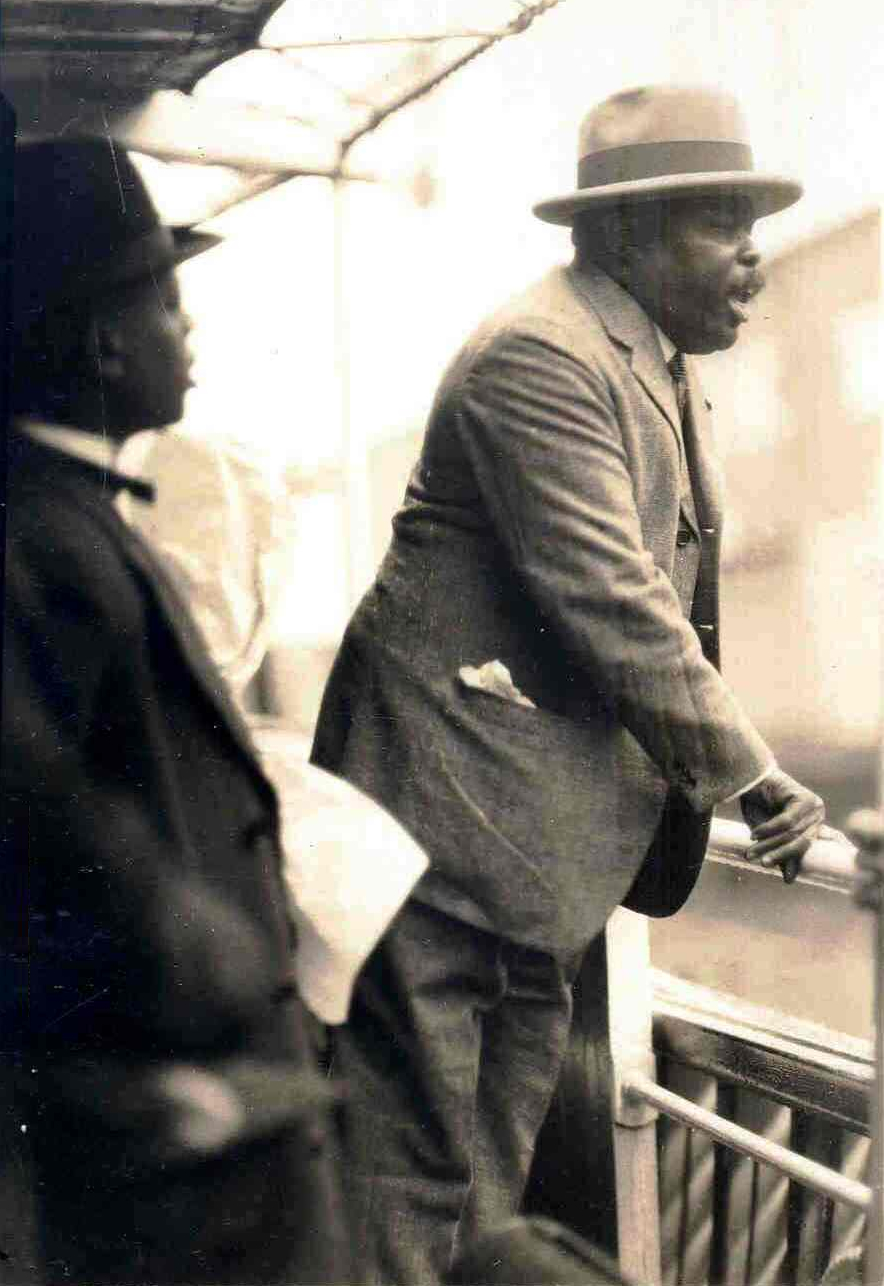
In November, 1927, after two years and 9 months in federal prison, Marcus Garvey was released early and then taken to New Orleans, Louisiana for deportation. On December 2, 1927, he was deported to Jamaica, never again to be allowed to return to the United States.
Without him present in the United States, the U.N.I.A. split into rival factions. Marcus Garvey made attempts to revive his organization from overseas, but his movement was never the same.
In 1935, he moved to London, England.
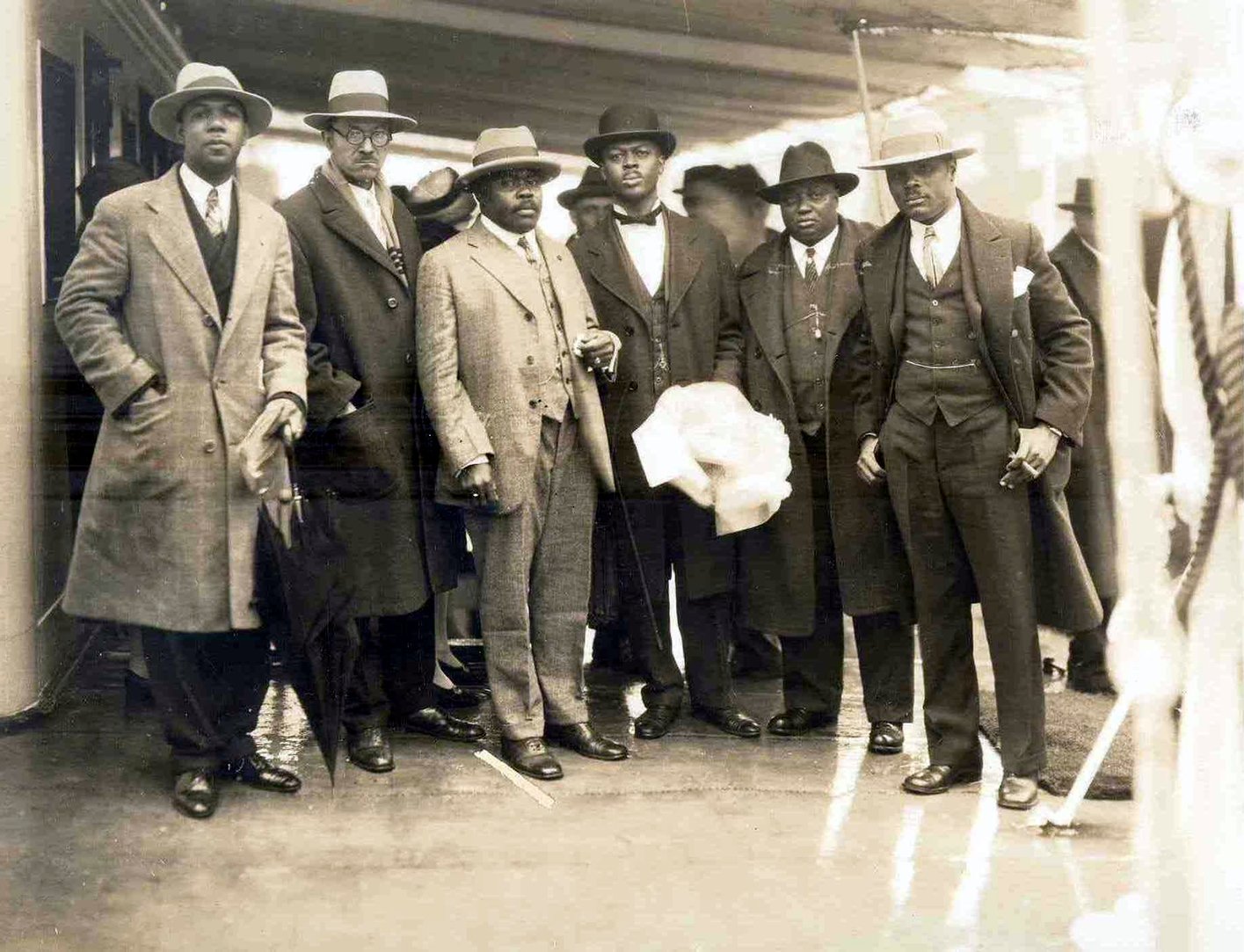
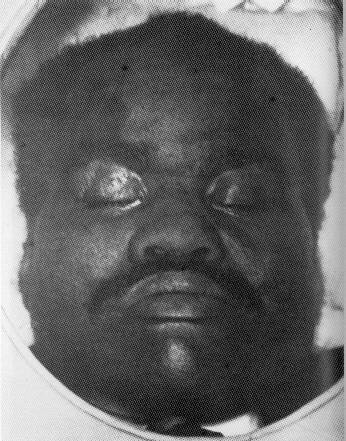
Garvey died in London, England on June 10, 1940. Due to World War II travel restrictions, his body couldn't be transported to Jamaica, where he was born, so he was originally buried in St. Mary's Roman Catholic cemetery in Kensal Green, London, England.

24 years later, after Jamaica gained its independence from England, Garvey's body was returned to Jamaica. On November 10, 1964, he was then re-buried in the Marcus Garvey Memorial and declared Jamaica's first National Hero. A crowd of more than 30,000 people attended the ceremony.

Though Marcus Garvey died, he truly LIVED!
The tremendous IMPACT of his work has been felt all over the world.

Marcus Garvey also left us a blueprint of how to successfully unite the Black race globally, how to organize our race, how to build businesses together, how to support each other, how to work together, and how to prosper together as a race.
Through his weekly writings in The Negro World, he even left us a record of his accomplishments and the challenges he faced from opposition along the way.
And future generations shall have in their hands the guide by which they shall know the sins of the 20th century.
- Marcus Garvey
WE ARE the future generation he spoke of. Marcus Garvey's legacy lives on though us...
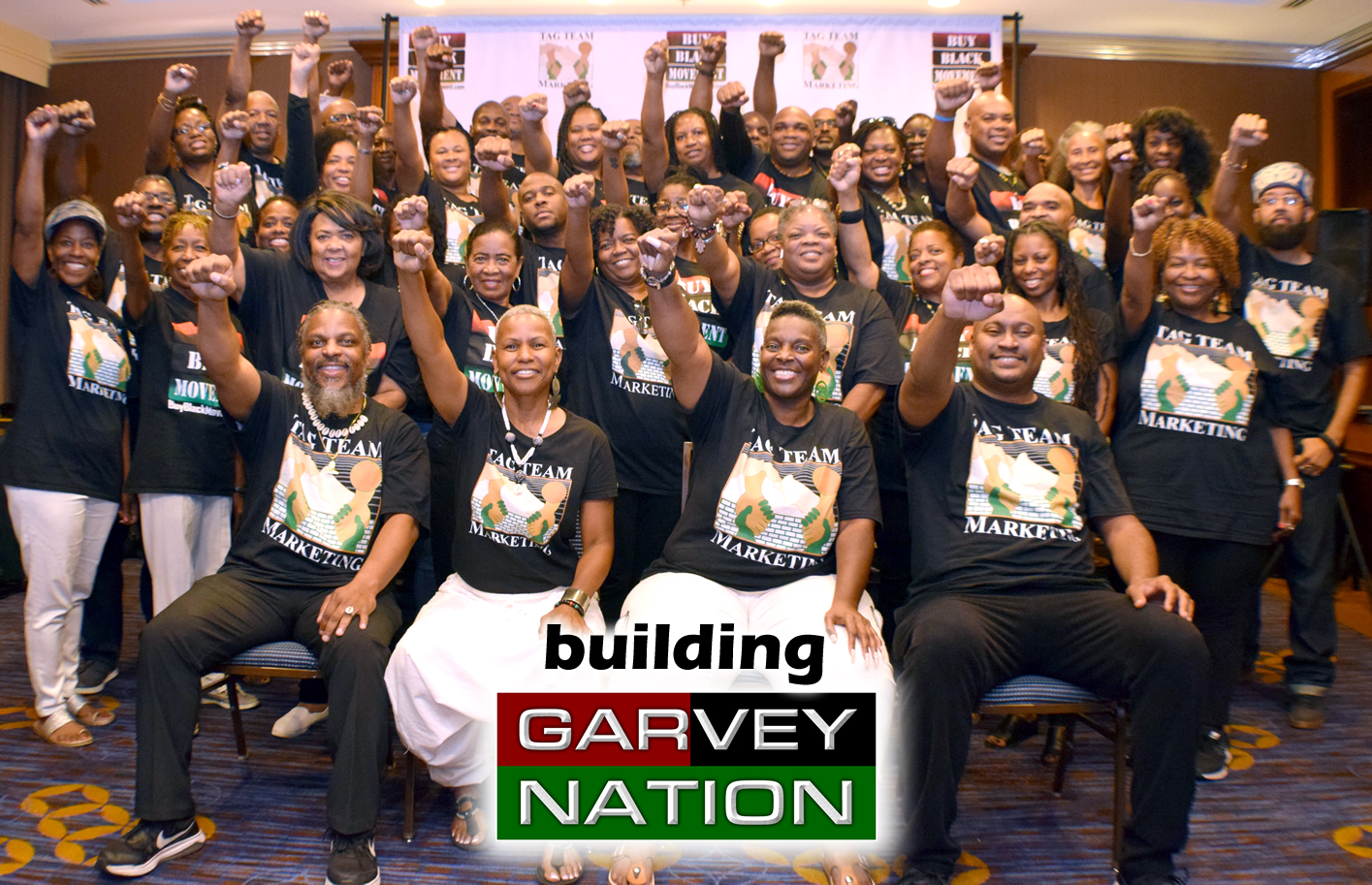
TAG TEAM Marketing is inspired by the vision and accomplishments of Marcus Garvey.
Garvey famously wrote, So let us start now to build big businesses, commerce and industry and eventually a nation of our own to protect us wherever we choose to live.
TAG TEAM Marketing decided to answer the call. So far, we have united 77,433 members in 158 countries, who have purchased 277,137 products from Black-owned businesses in Garvey Nation. This has generated tremendous income paid out in tens of thousands of paychecks to Black families all over the world.
Now, TAG TEAM Marketing is utilizing this economic power to build a nation of our own to protect us wherever we choose to live
, like Marcus Garvey envisioned... an online nation... Garvey Nation.

"I shall write the history that will inspire the millions that are coming and leave the posterity (future generations) of our enemies to reckon with the hosts for the deeds of their fathers."